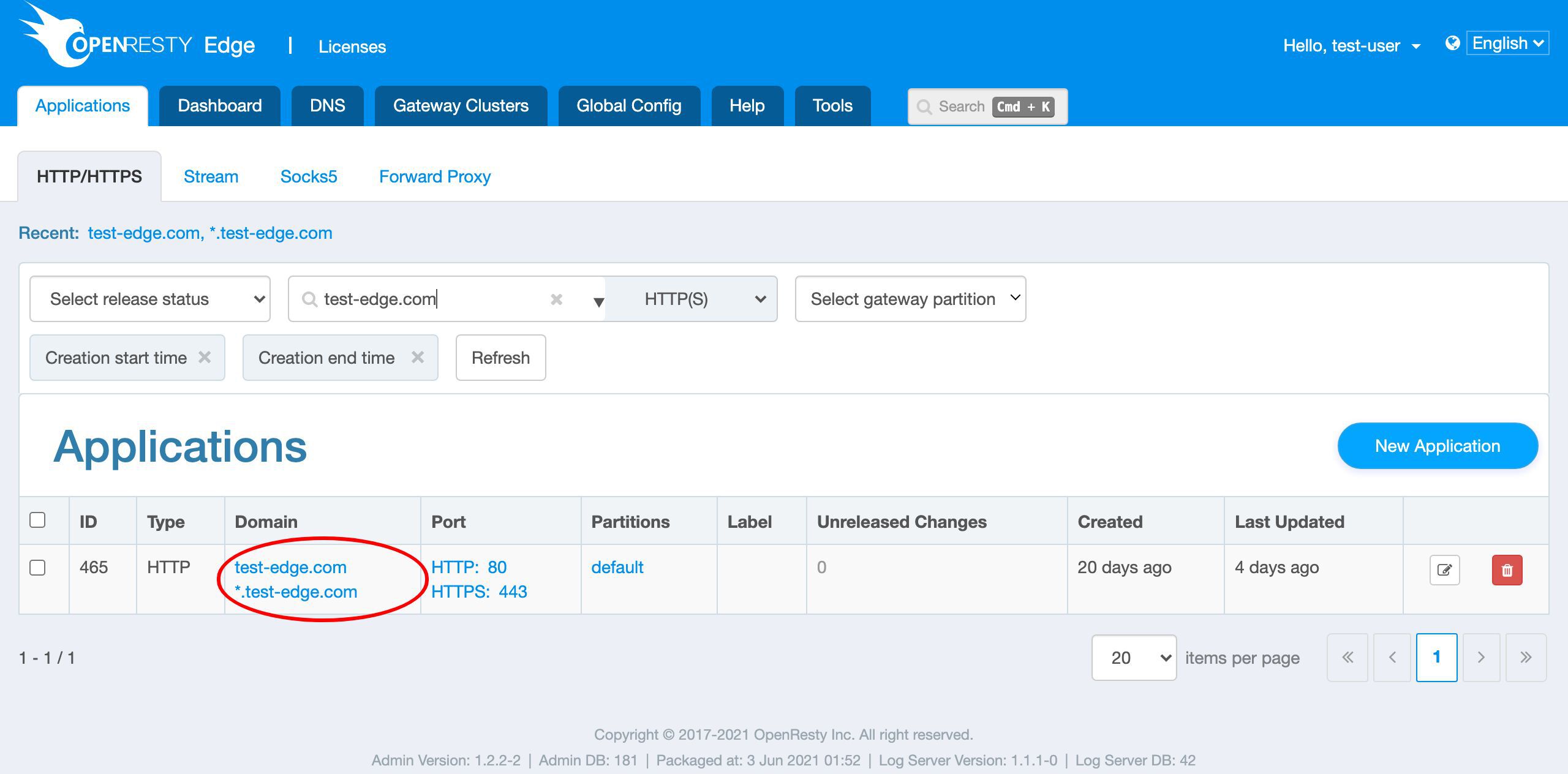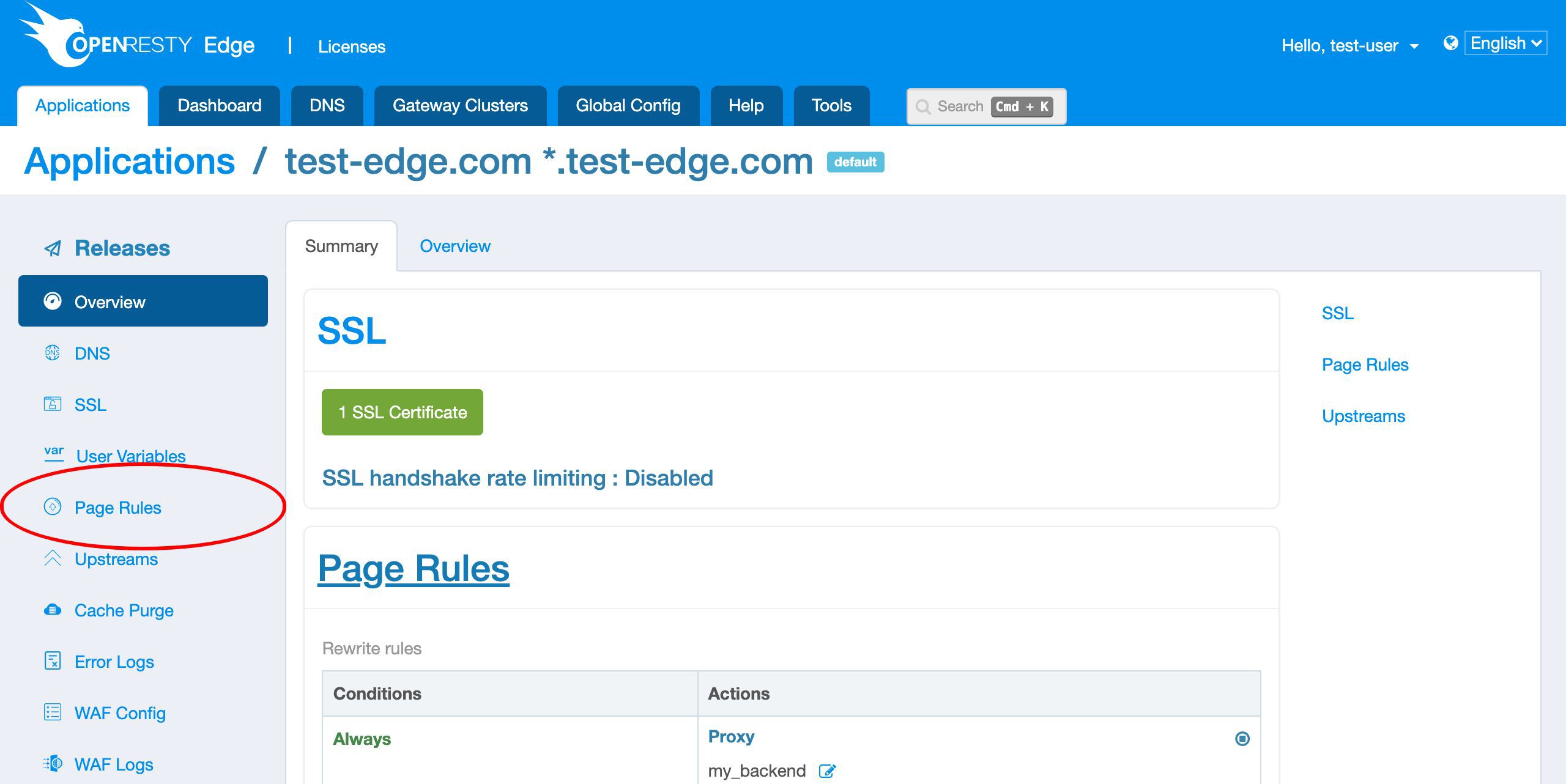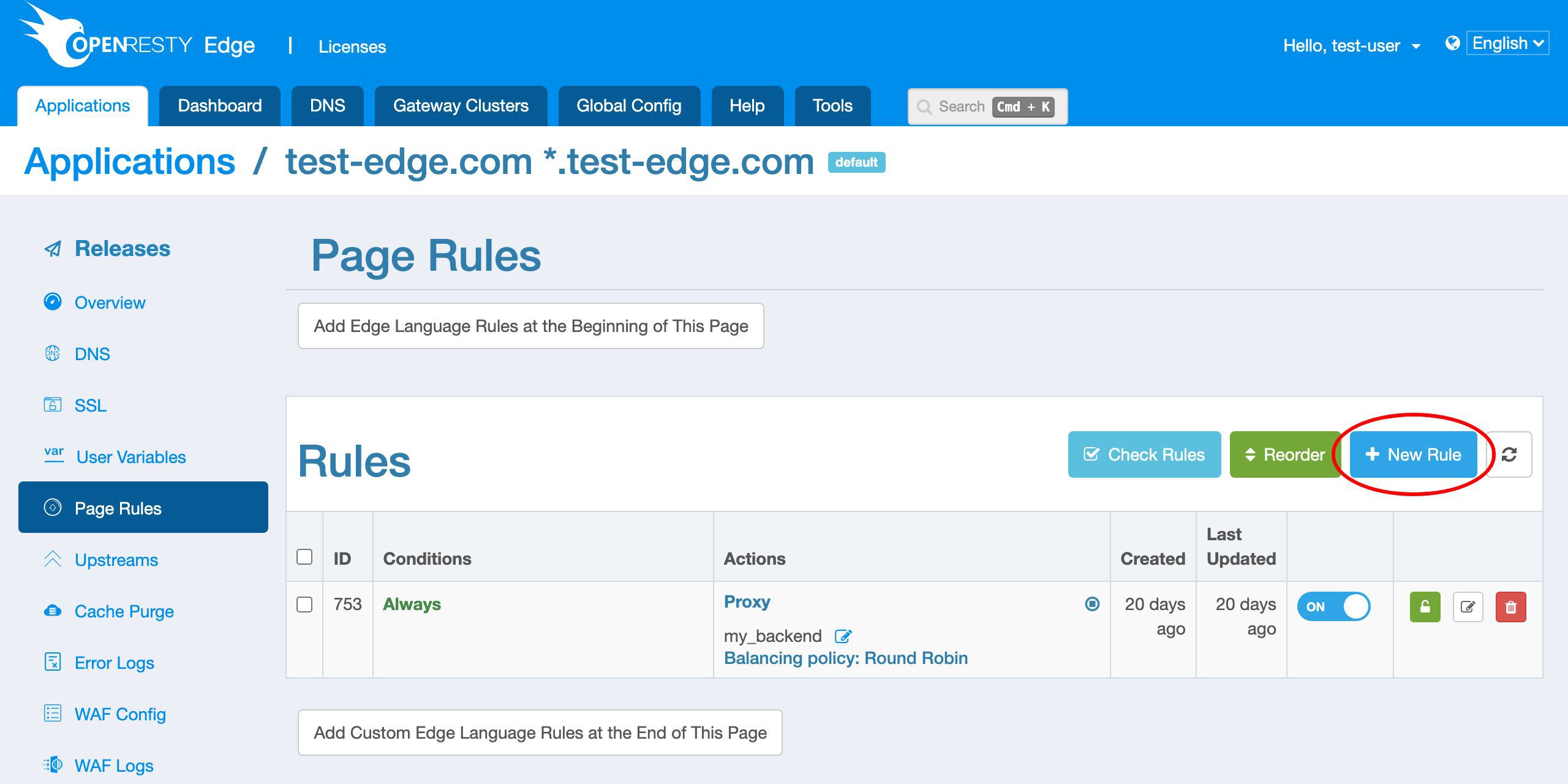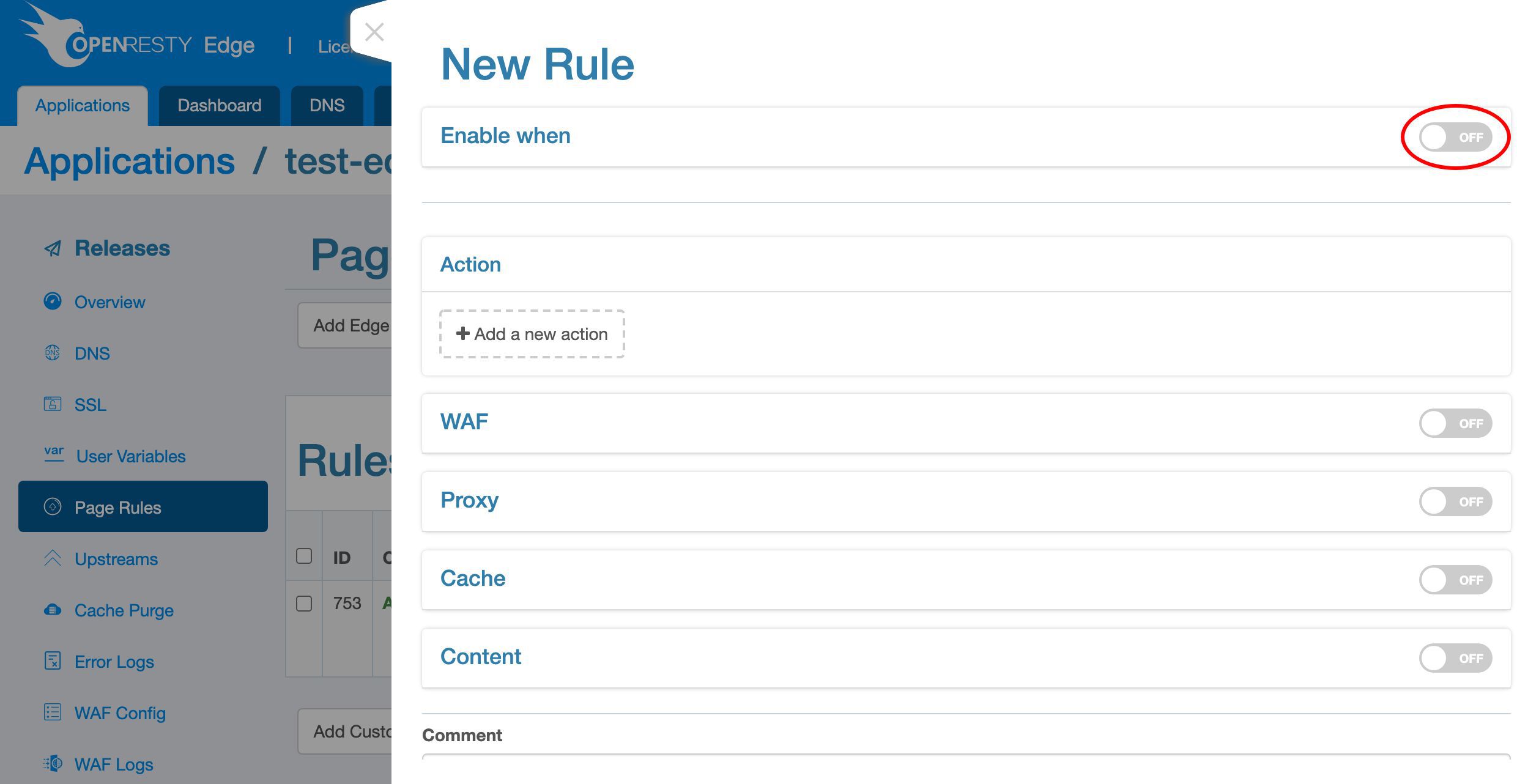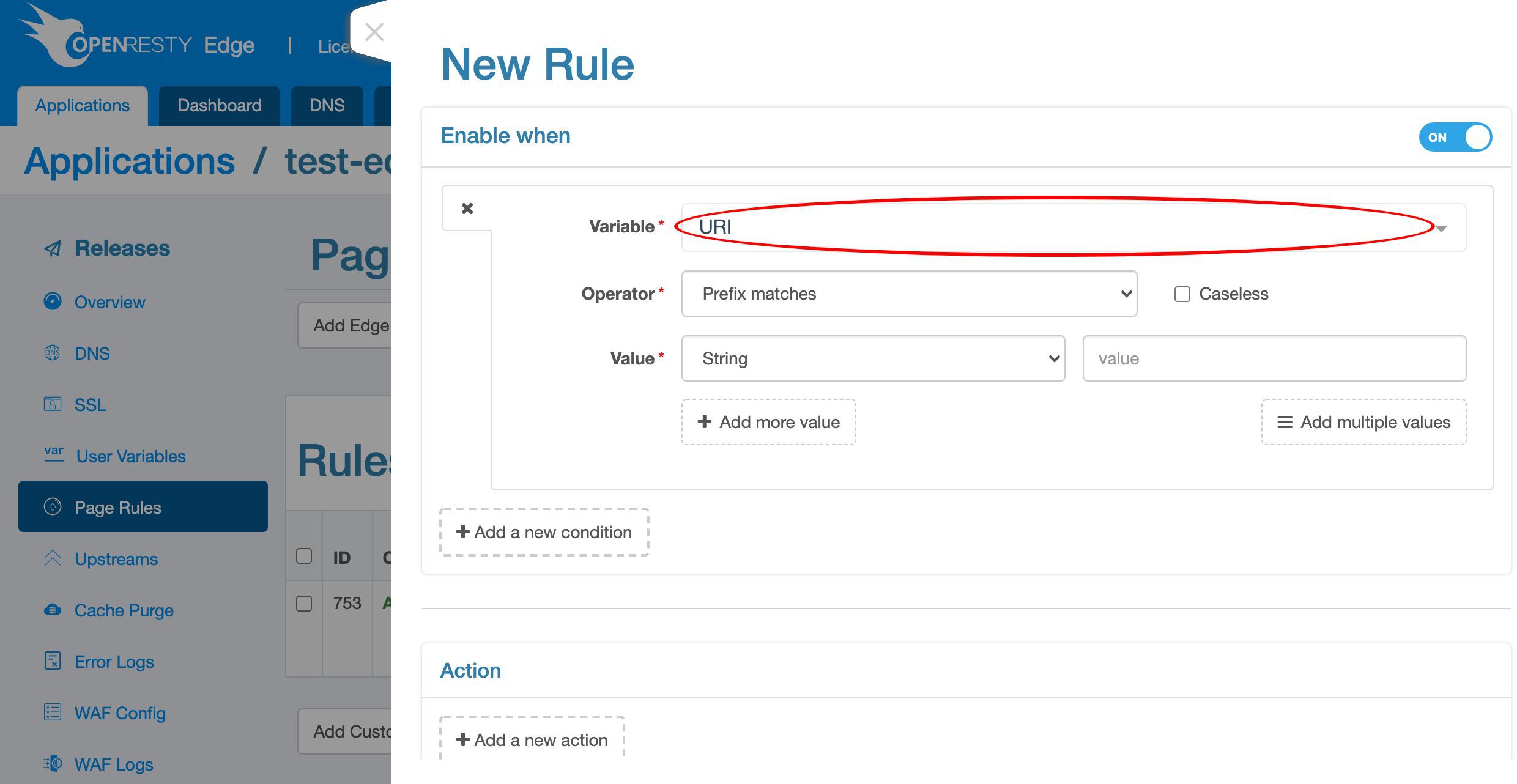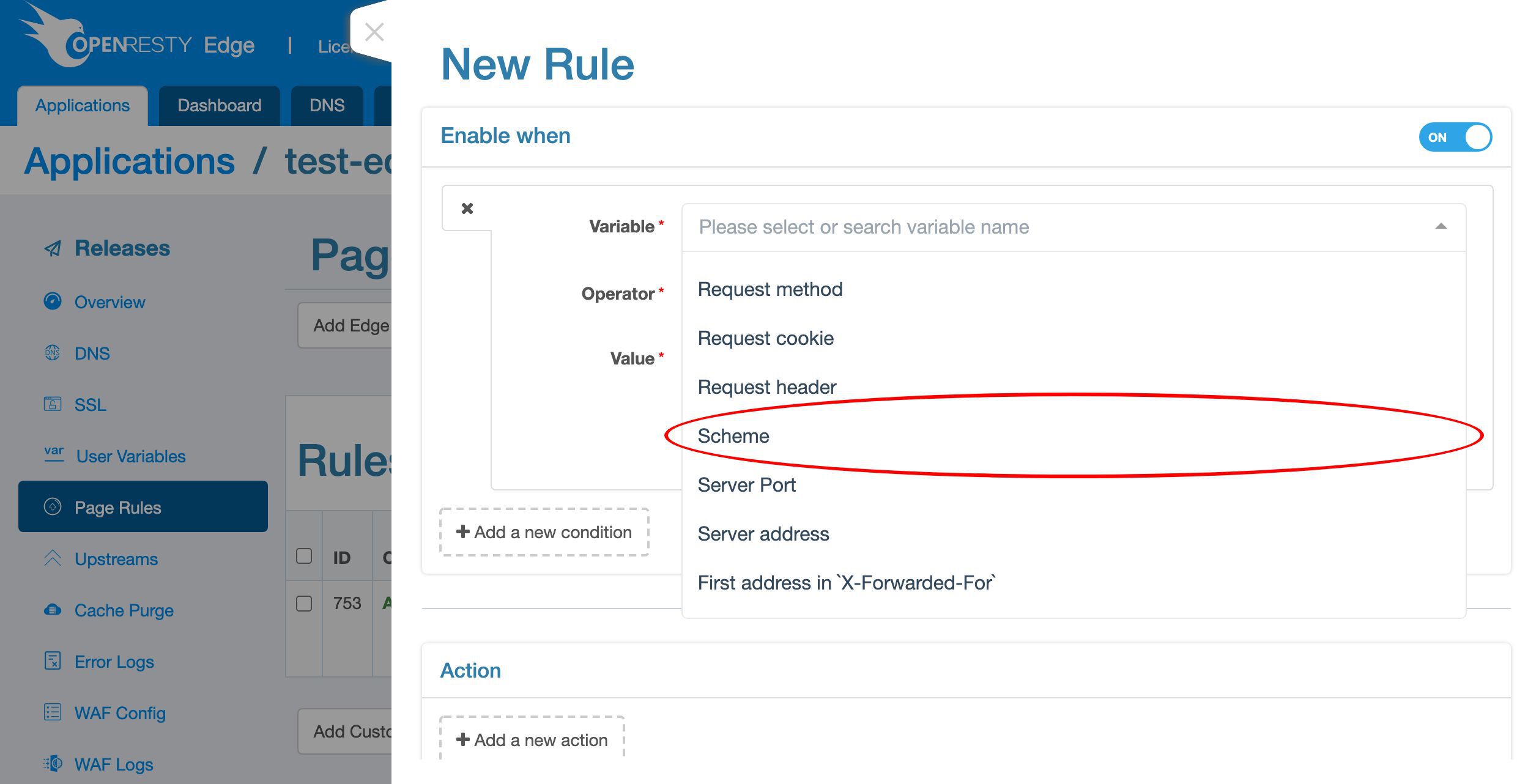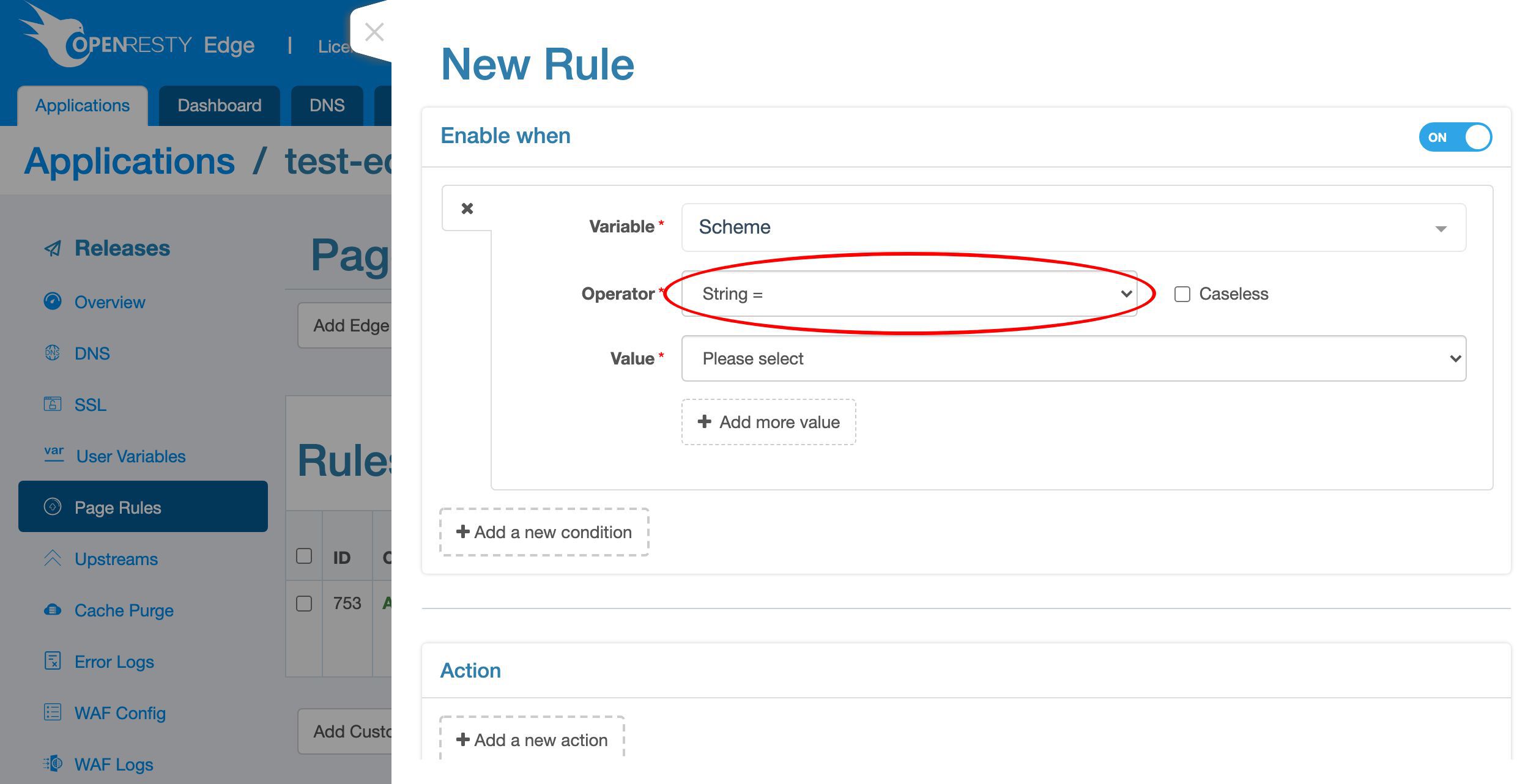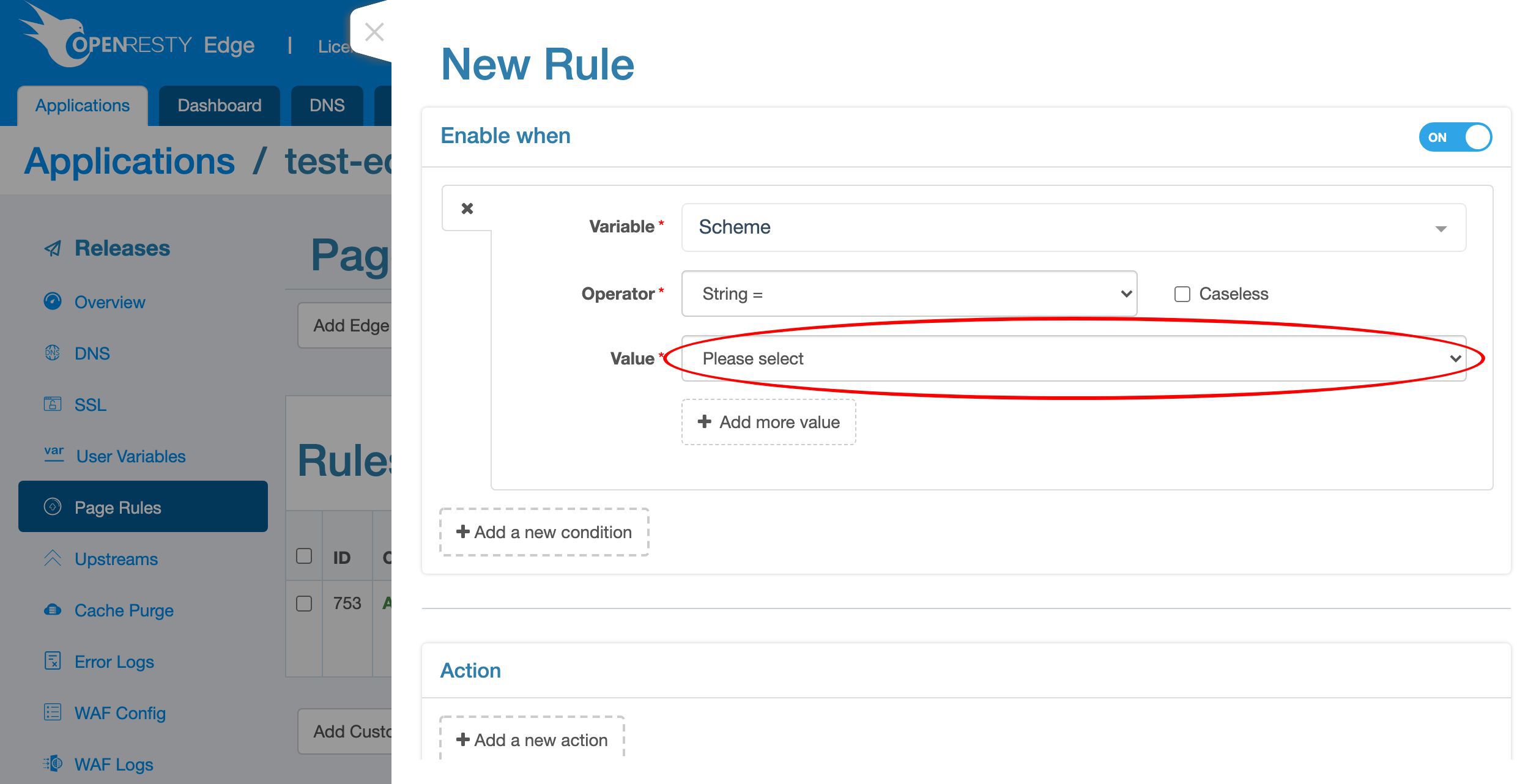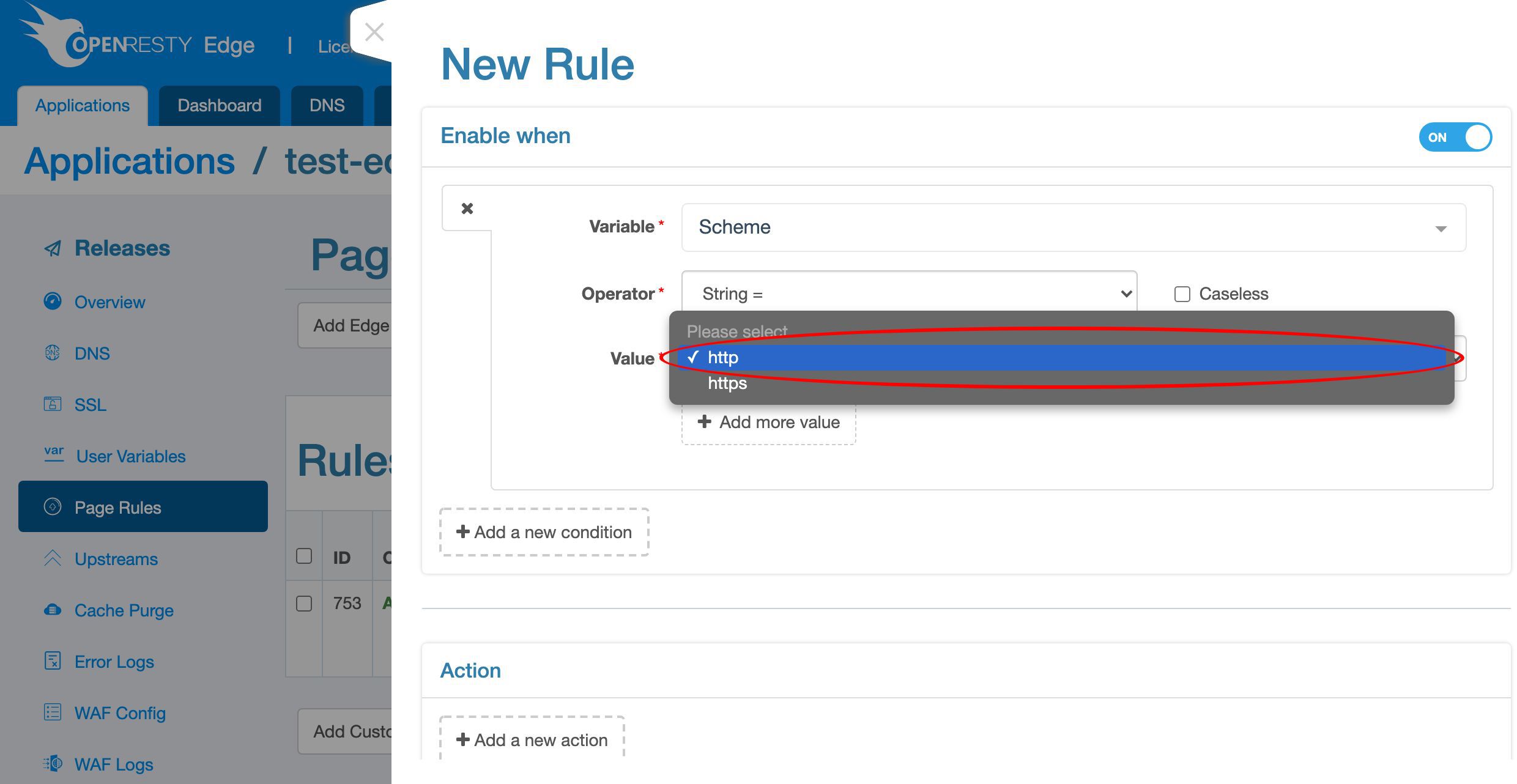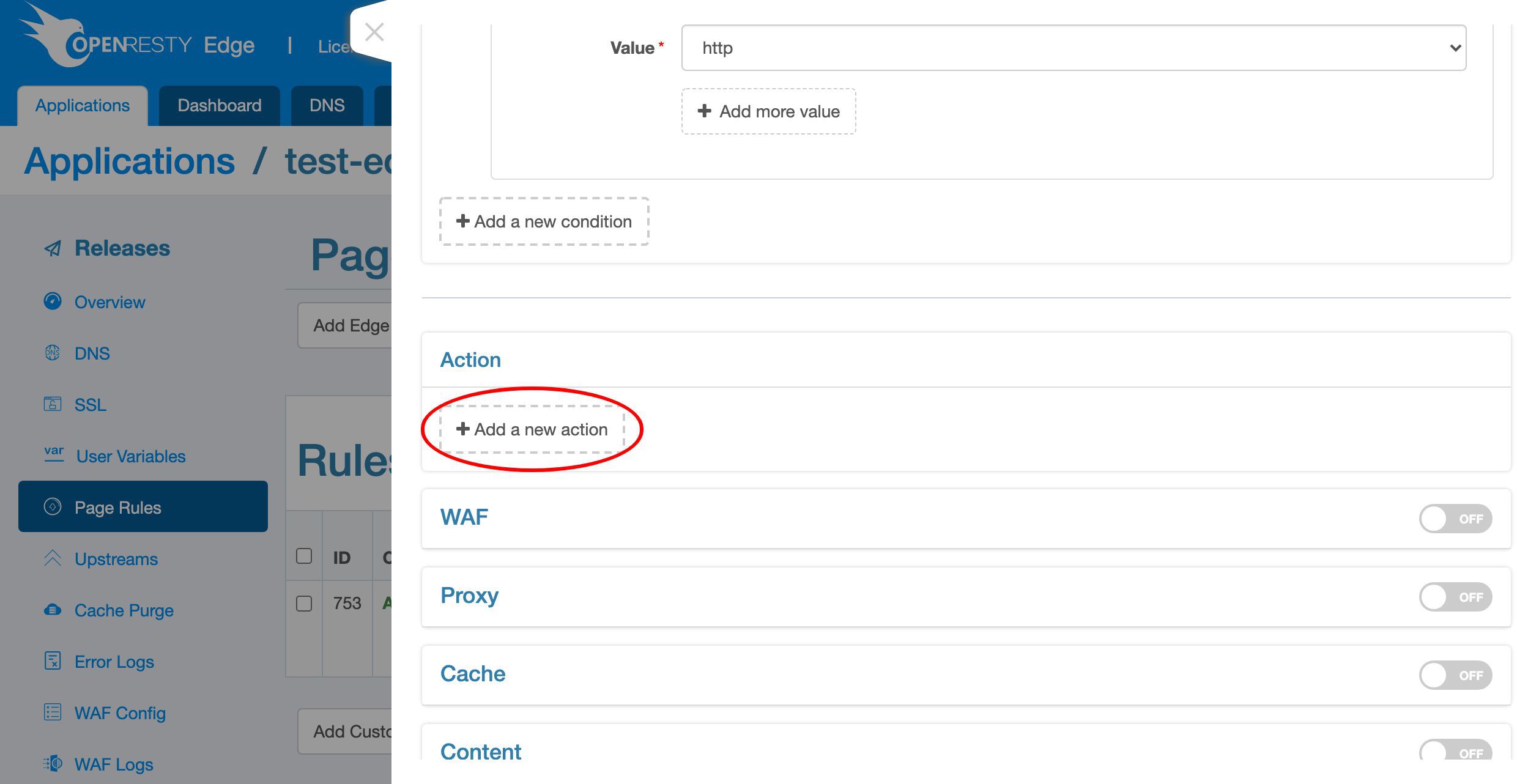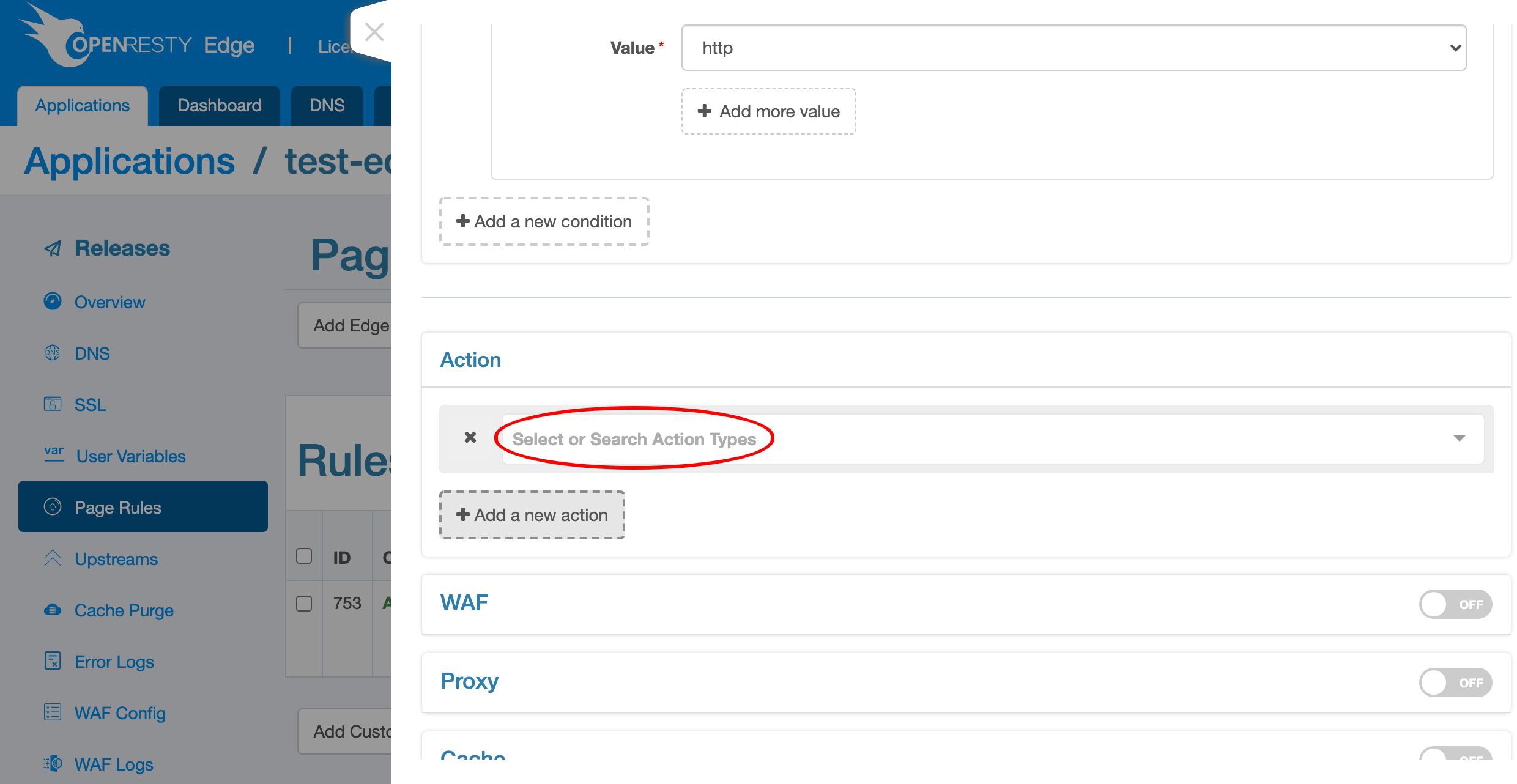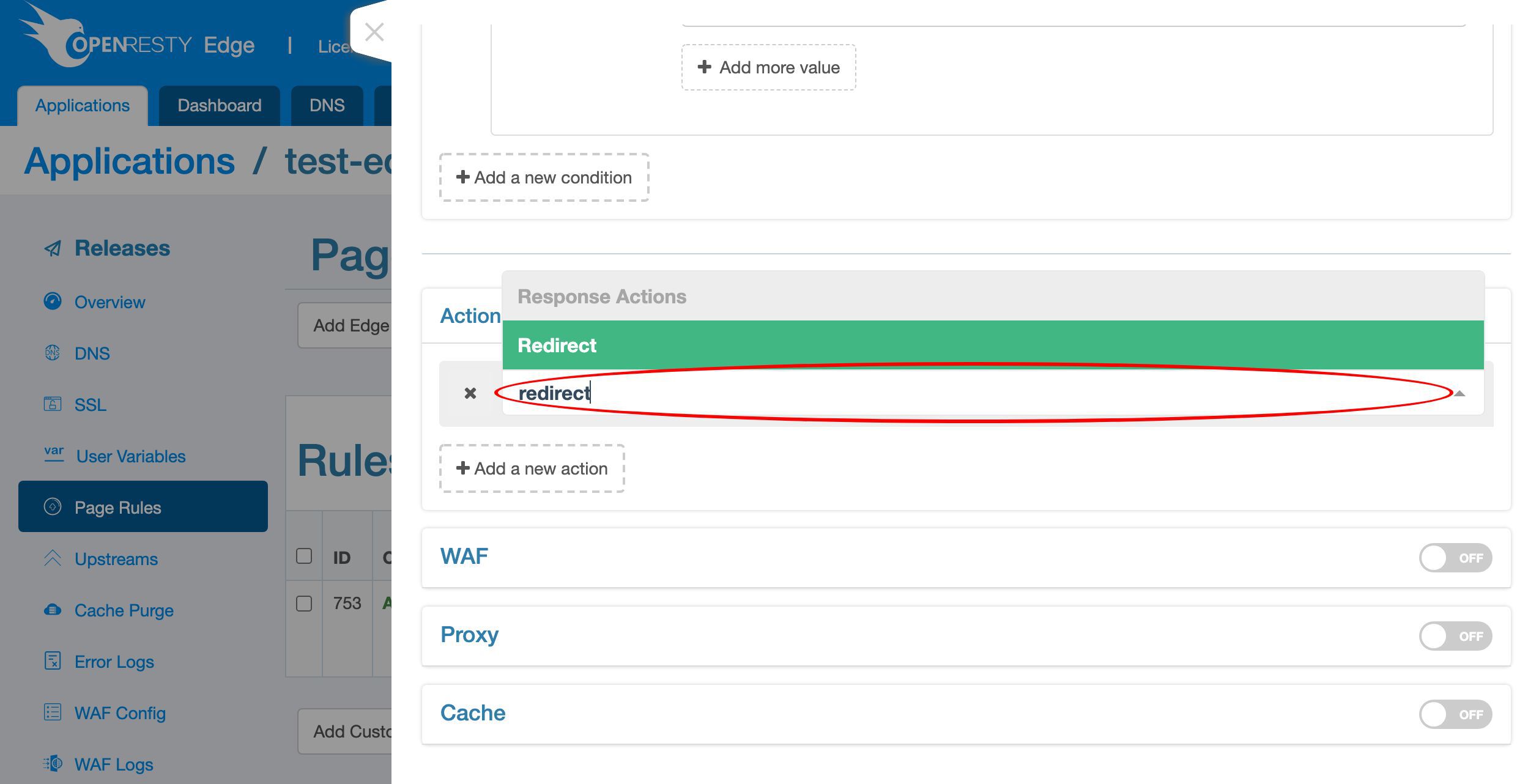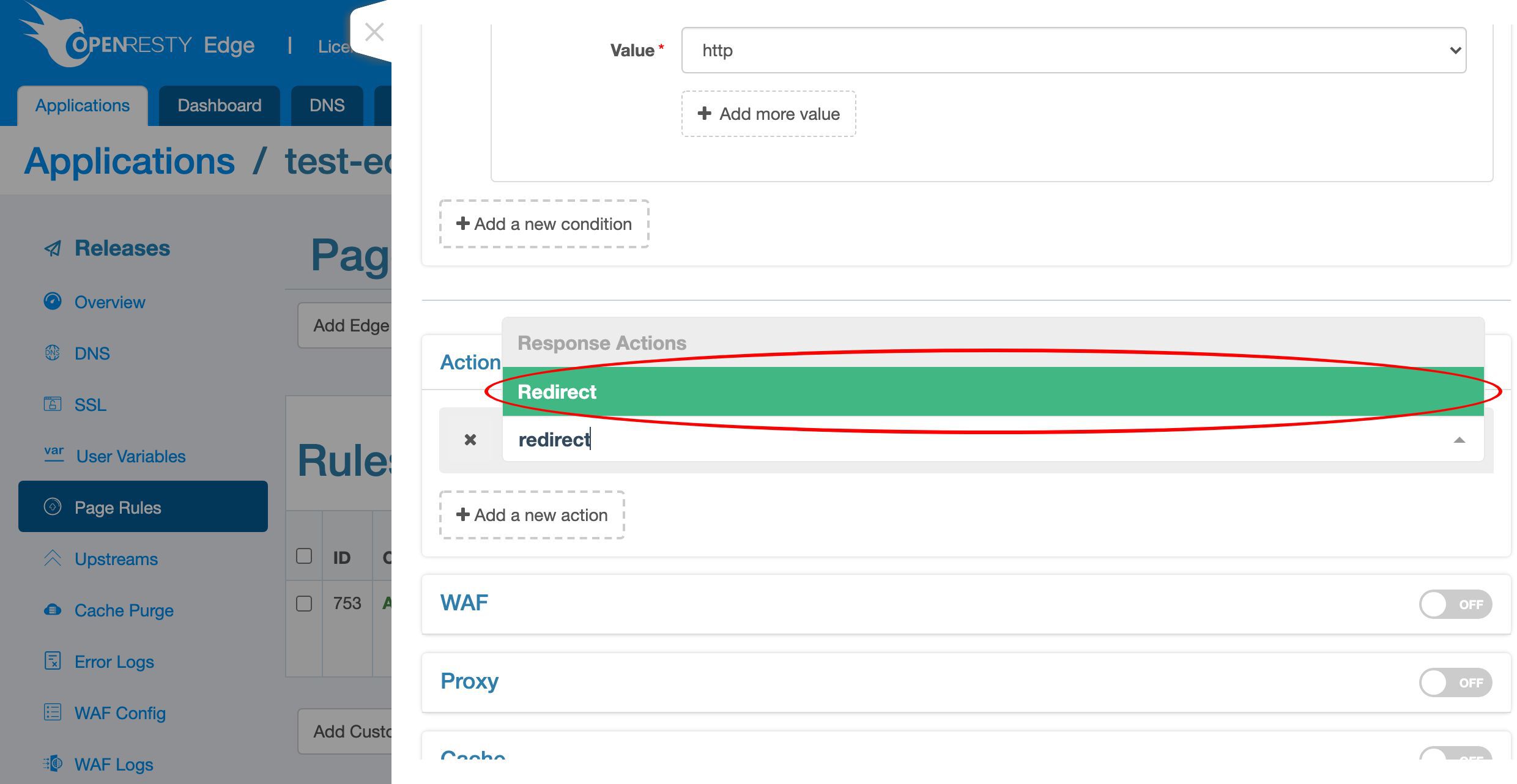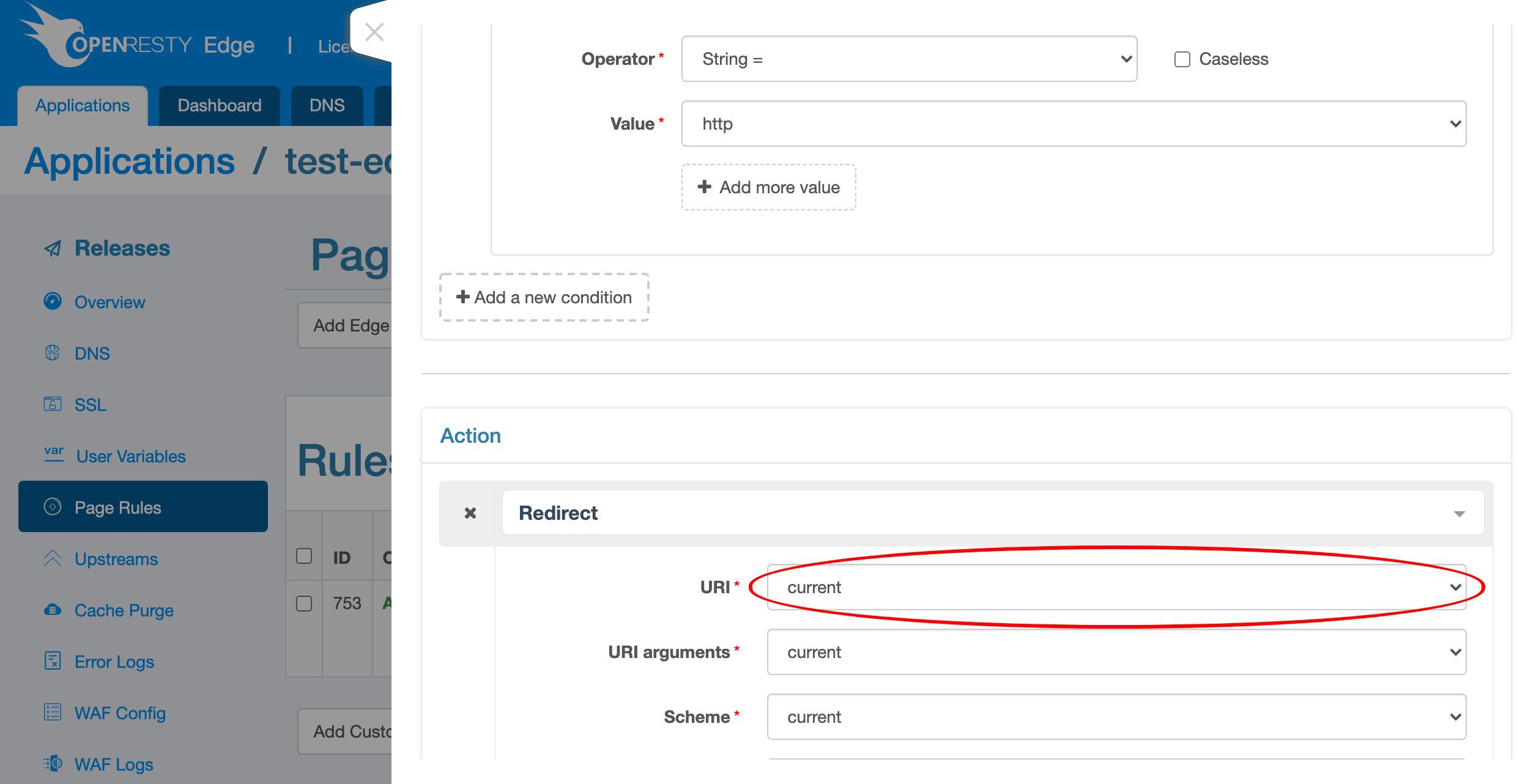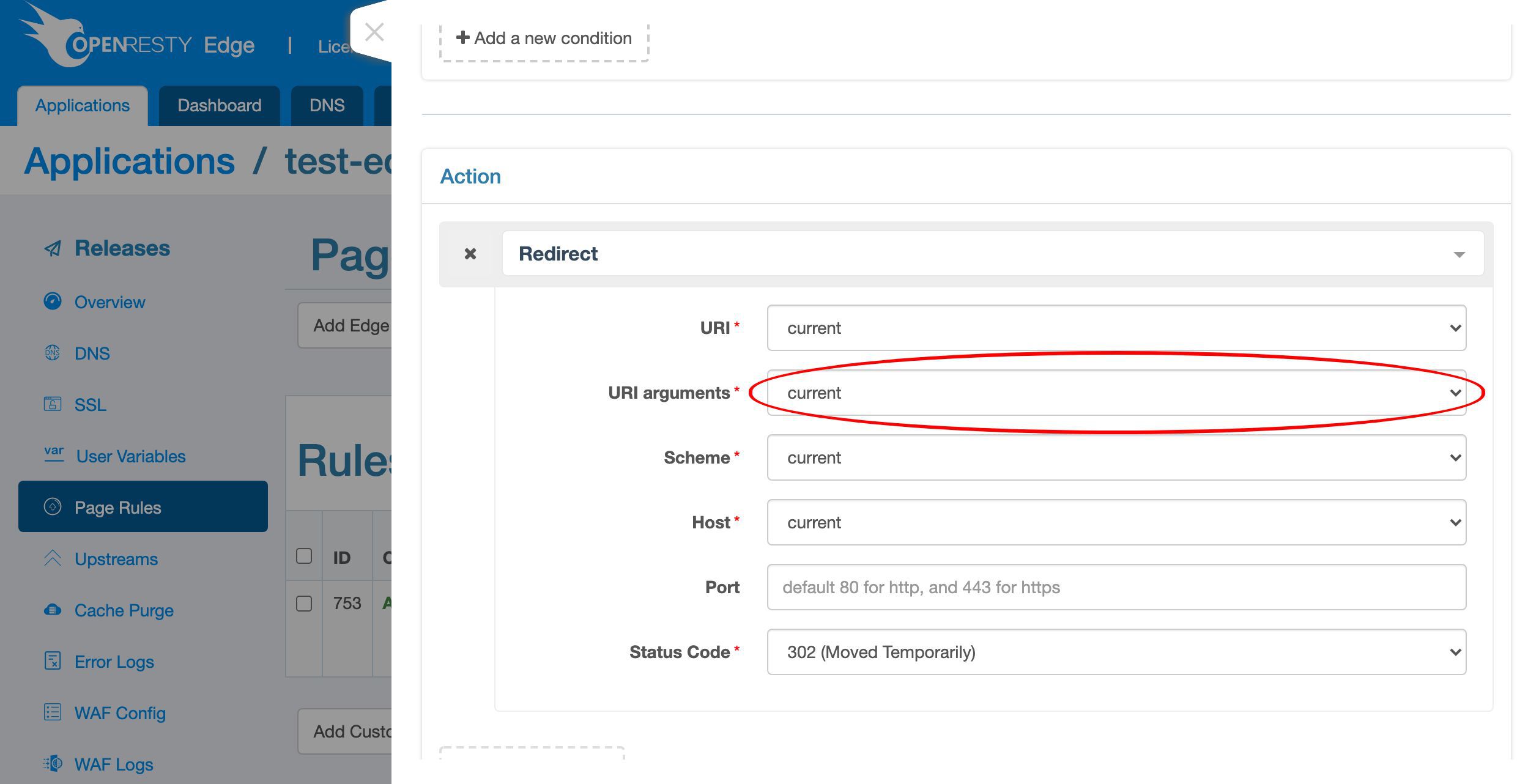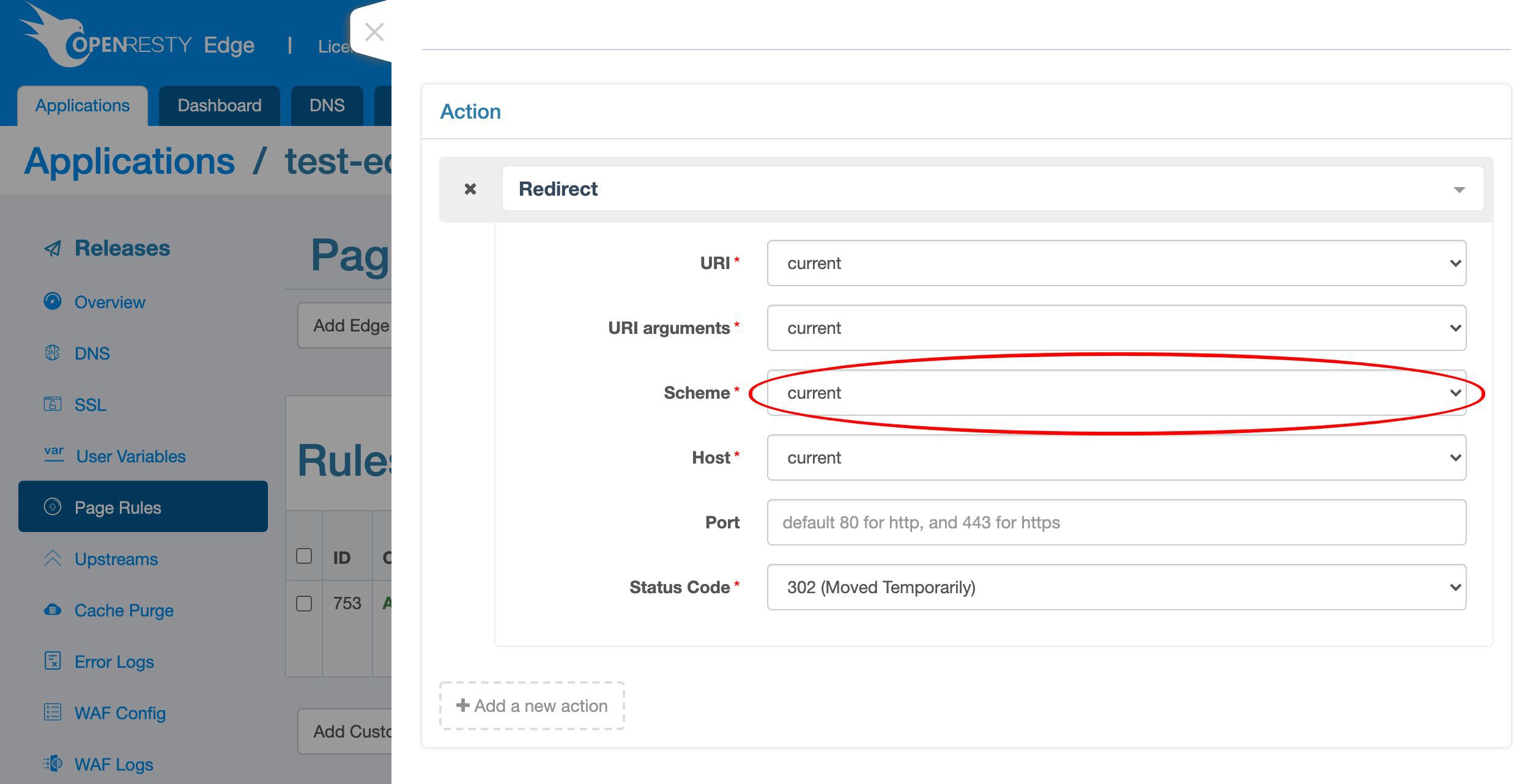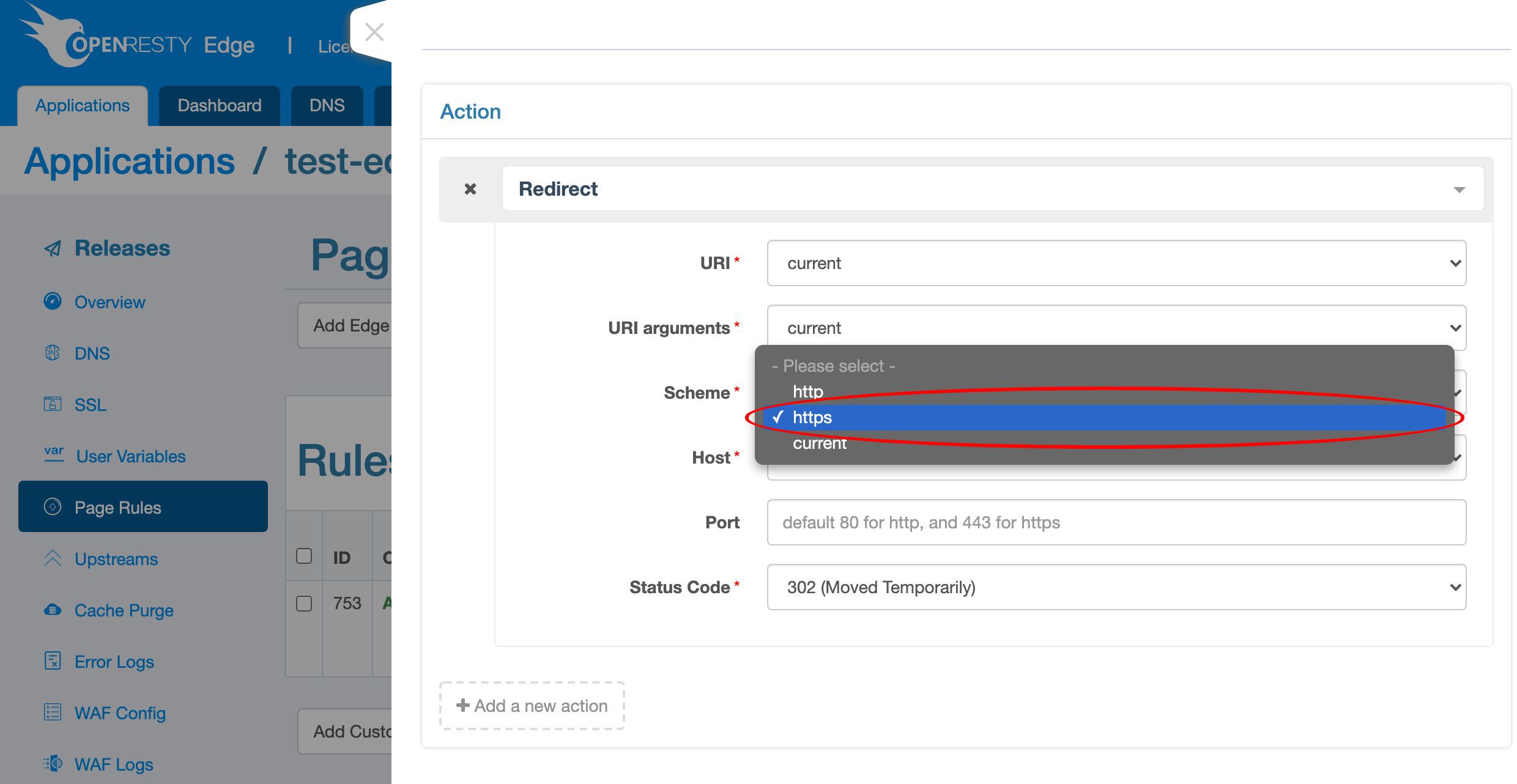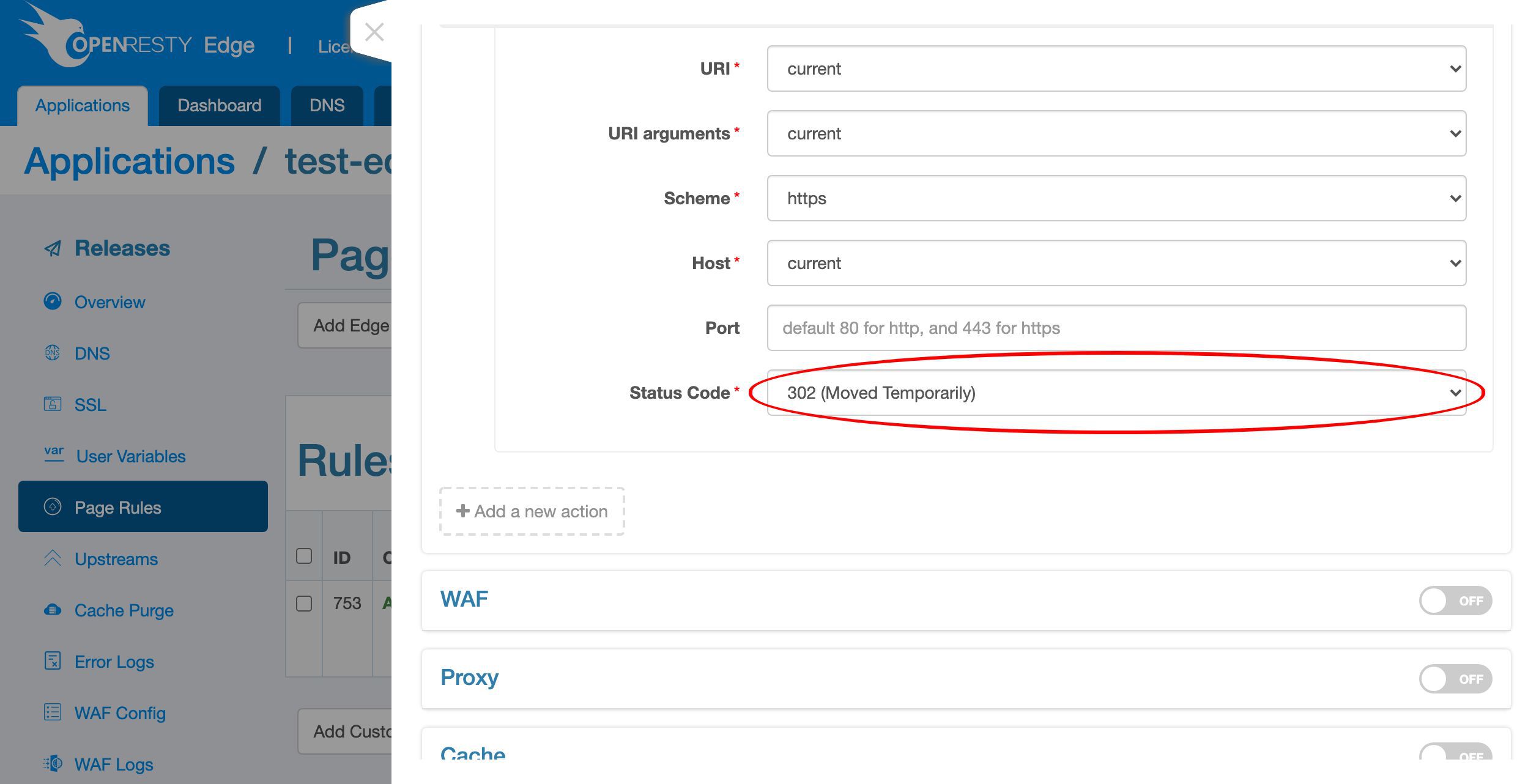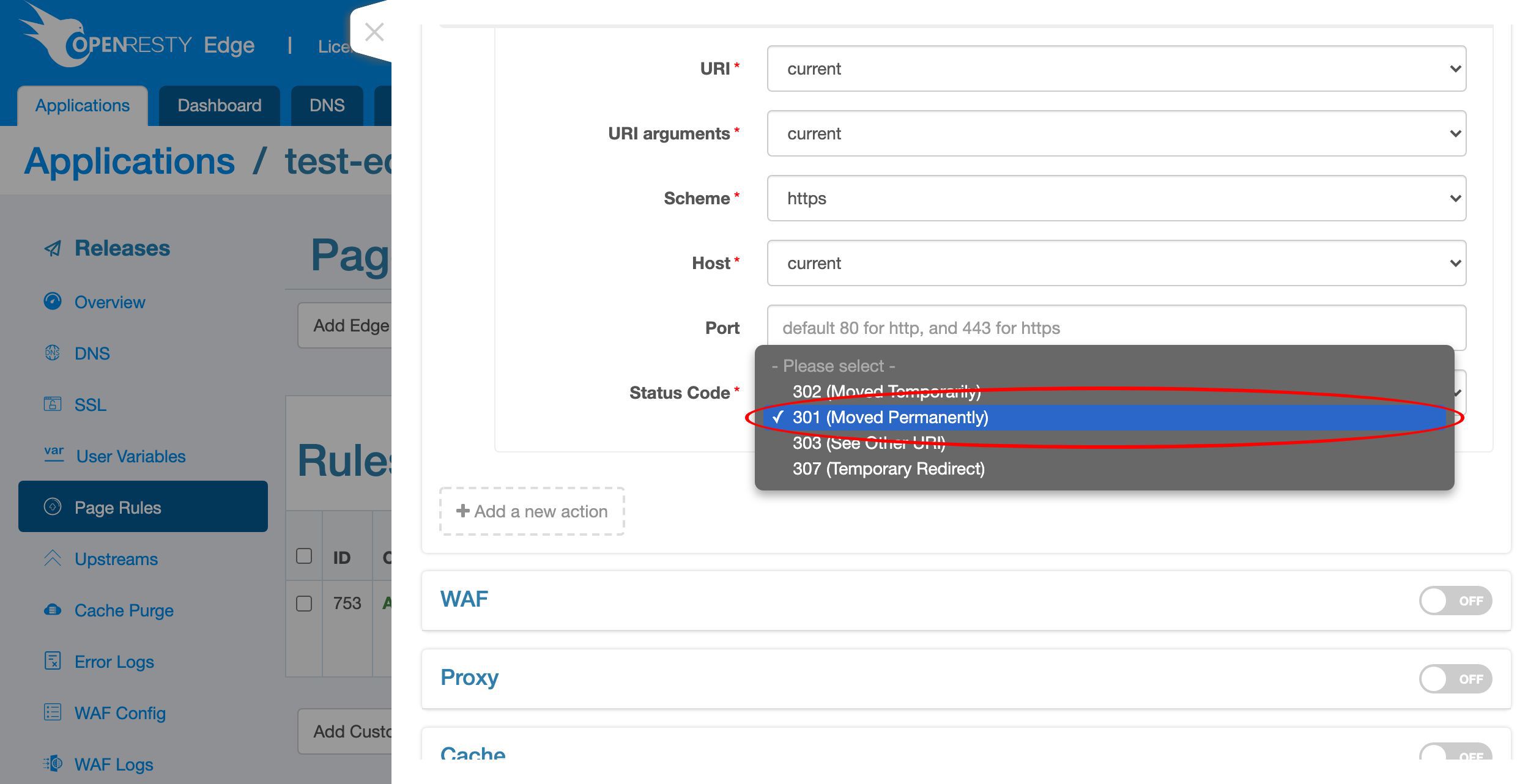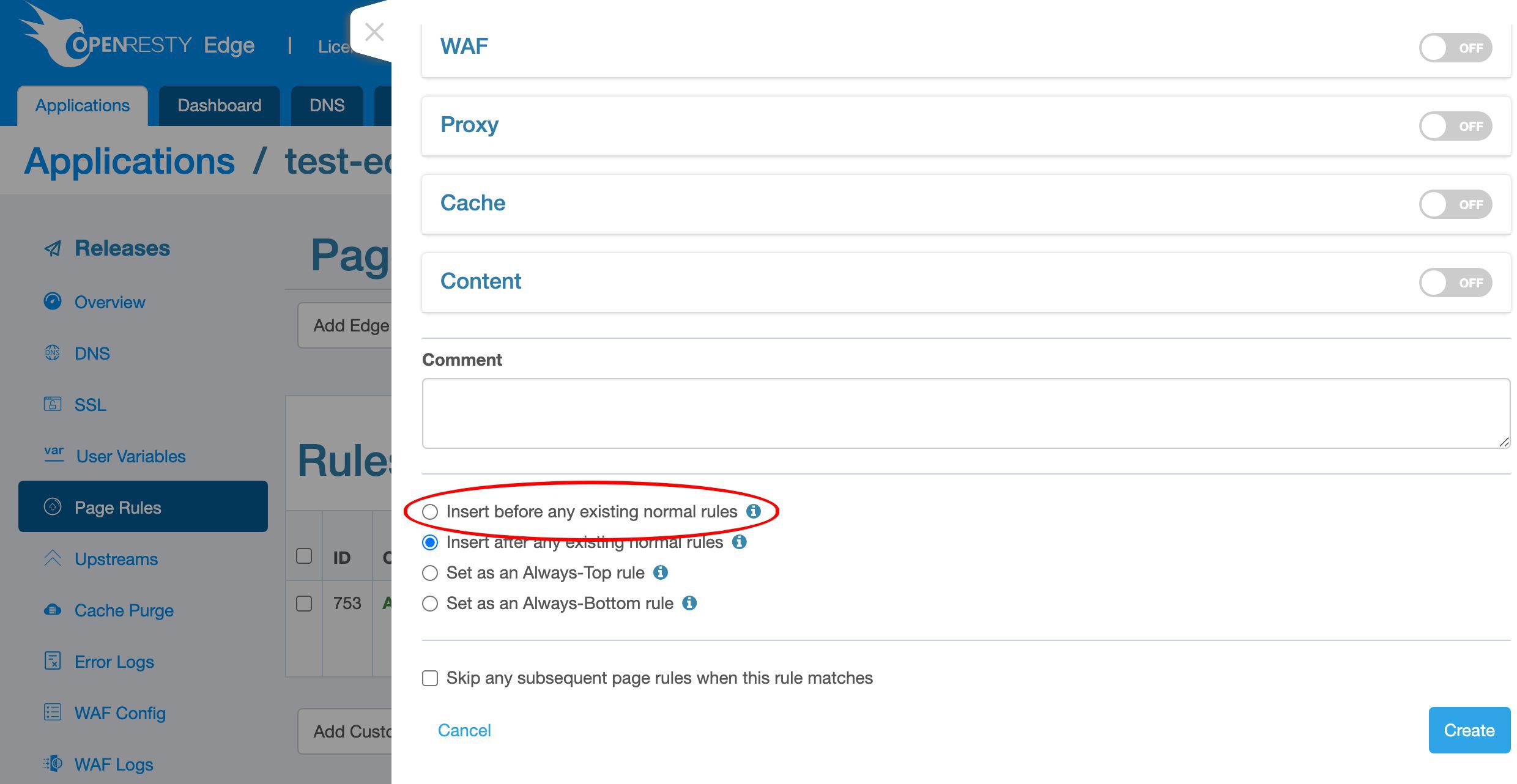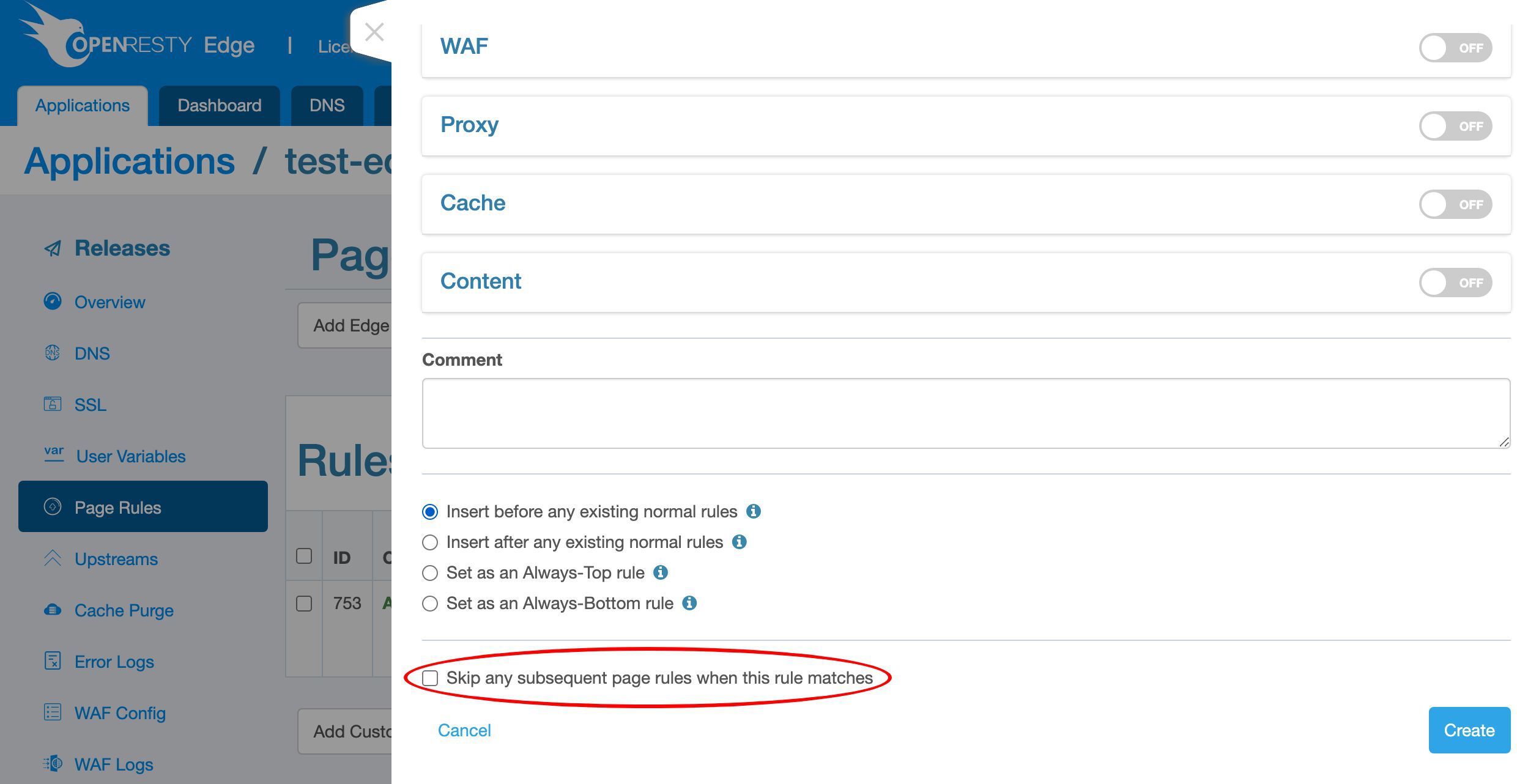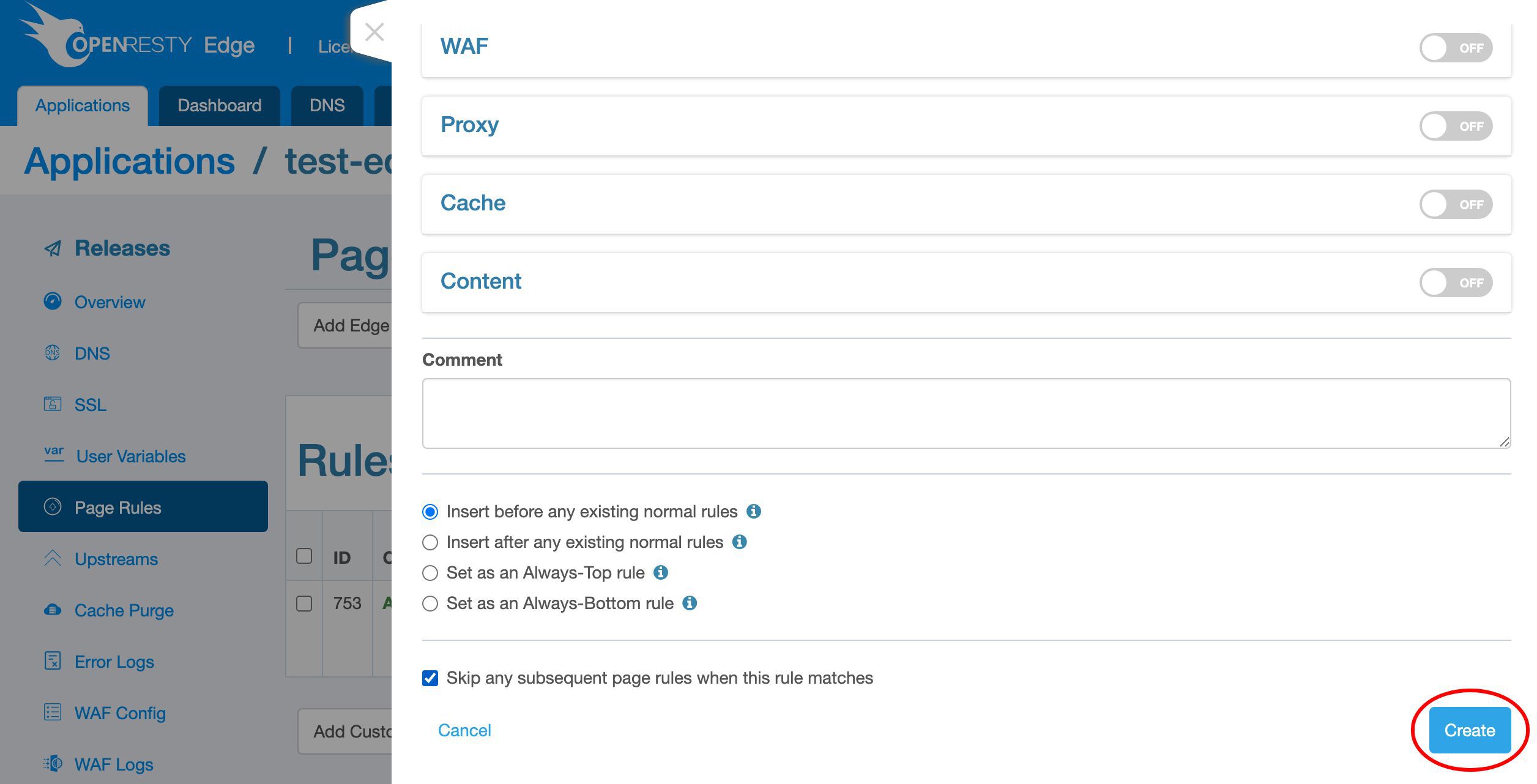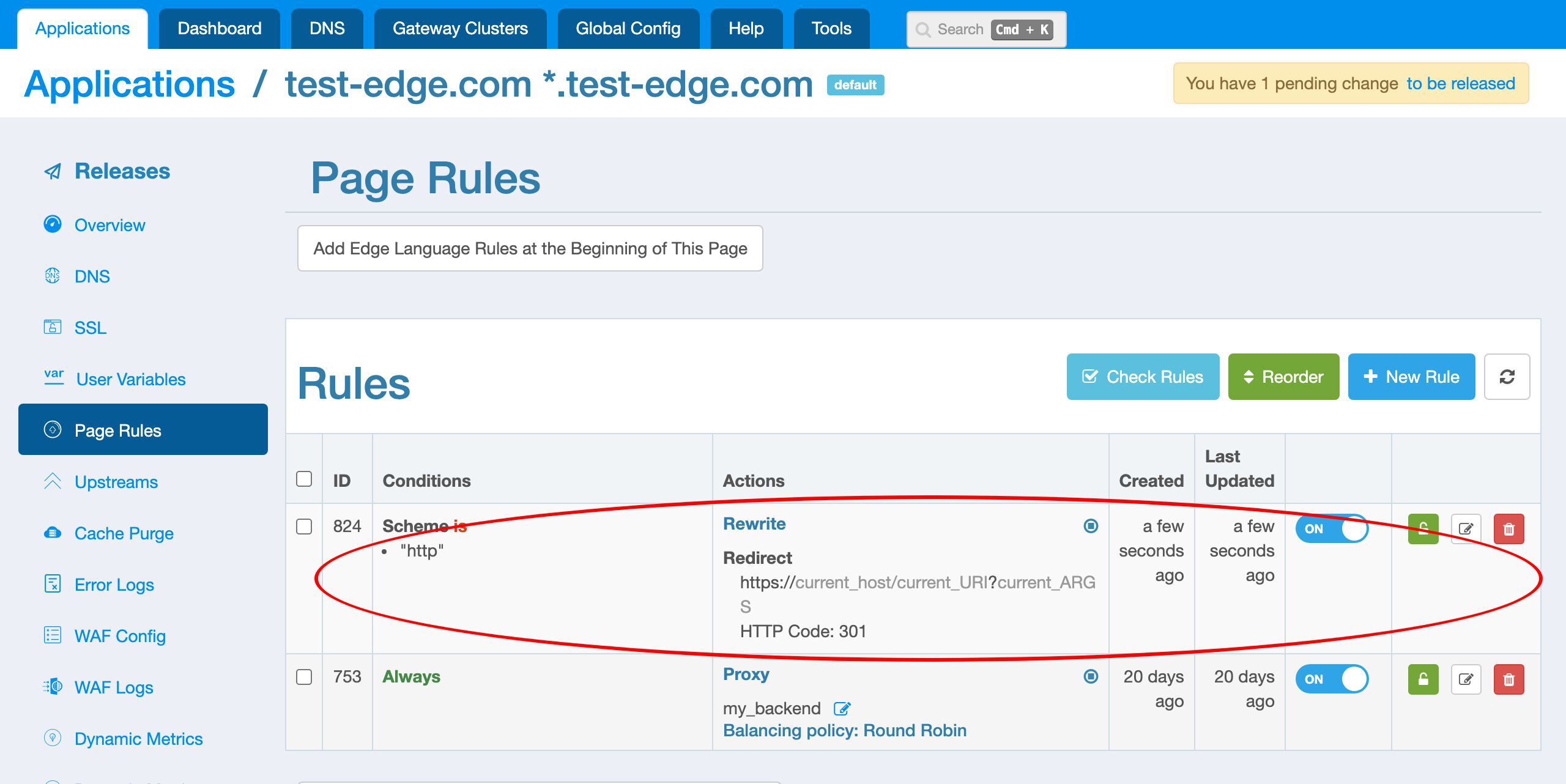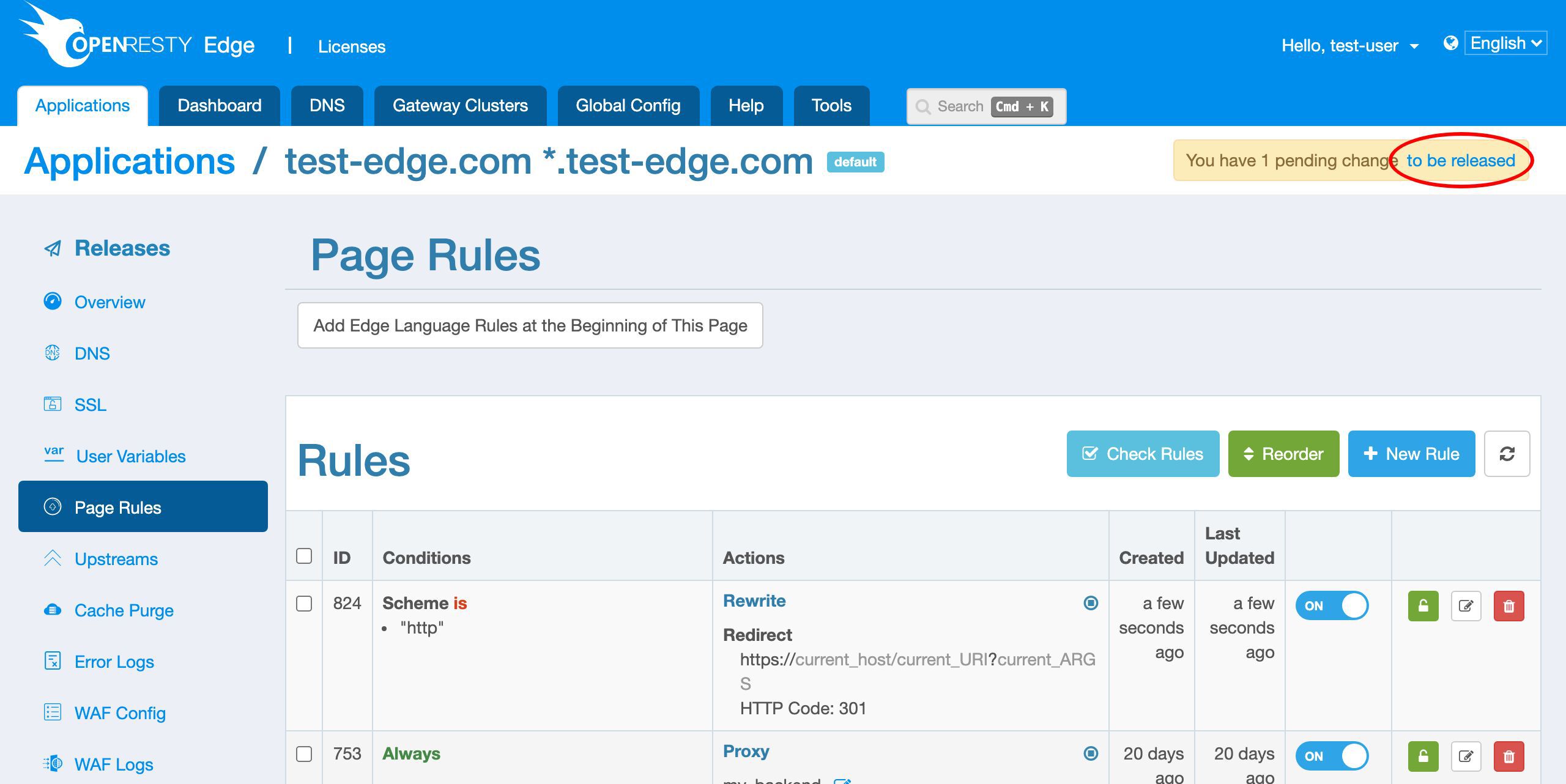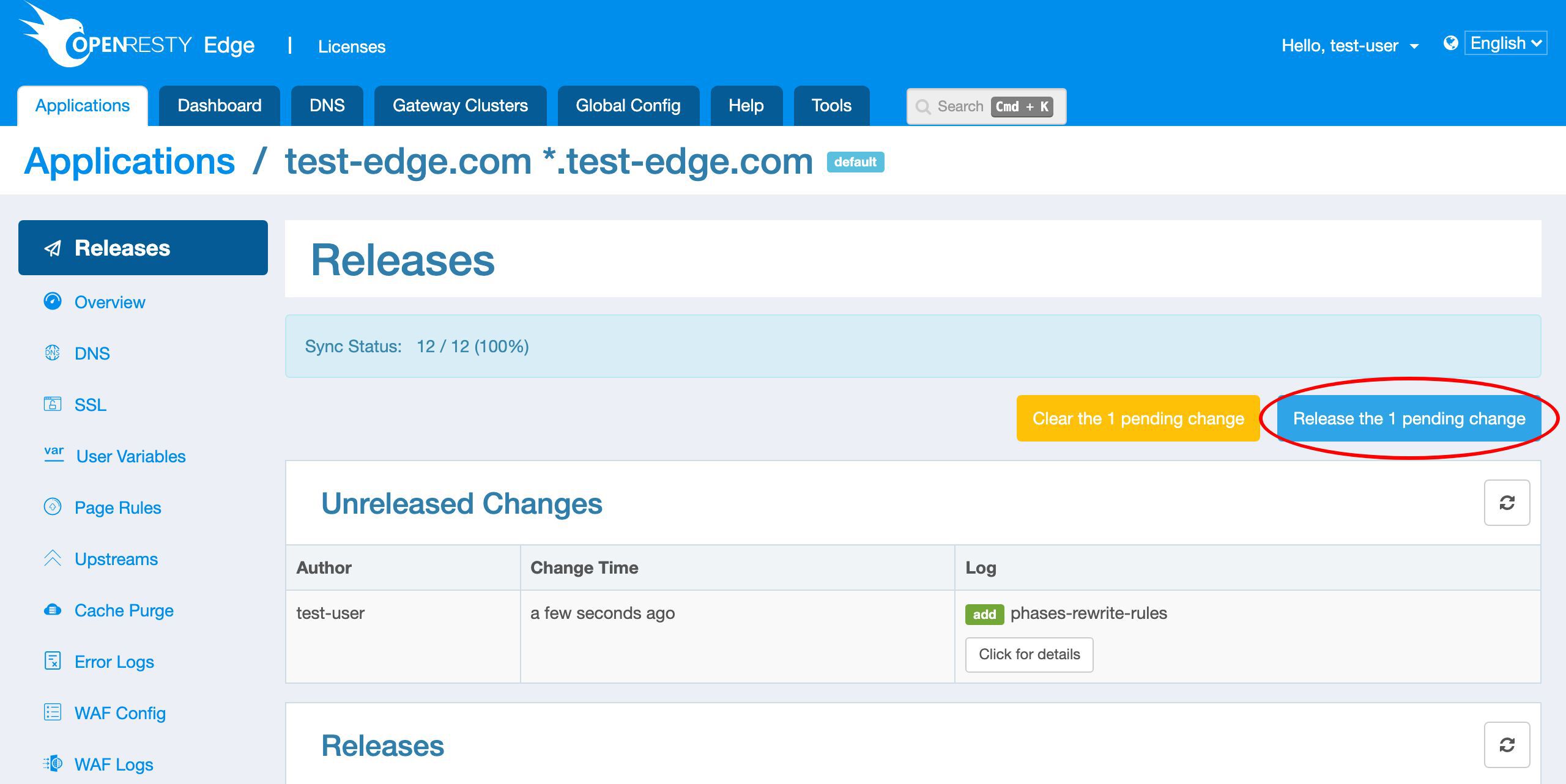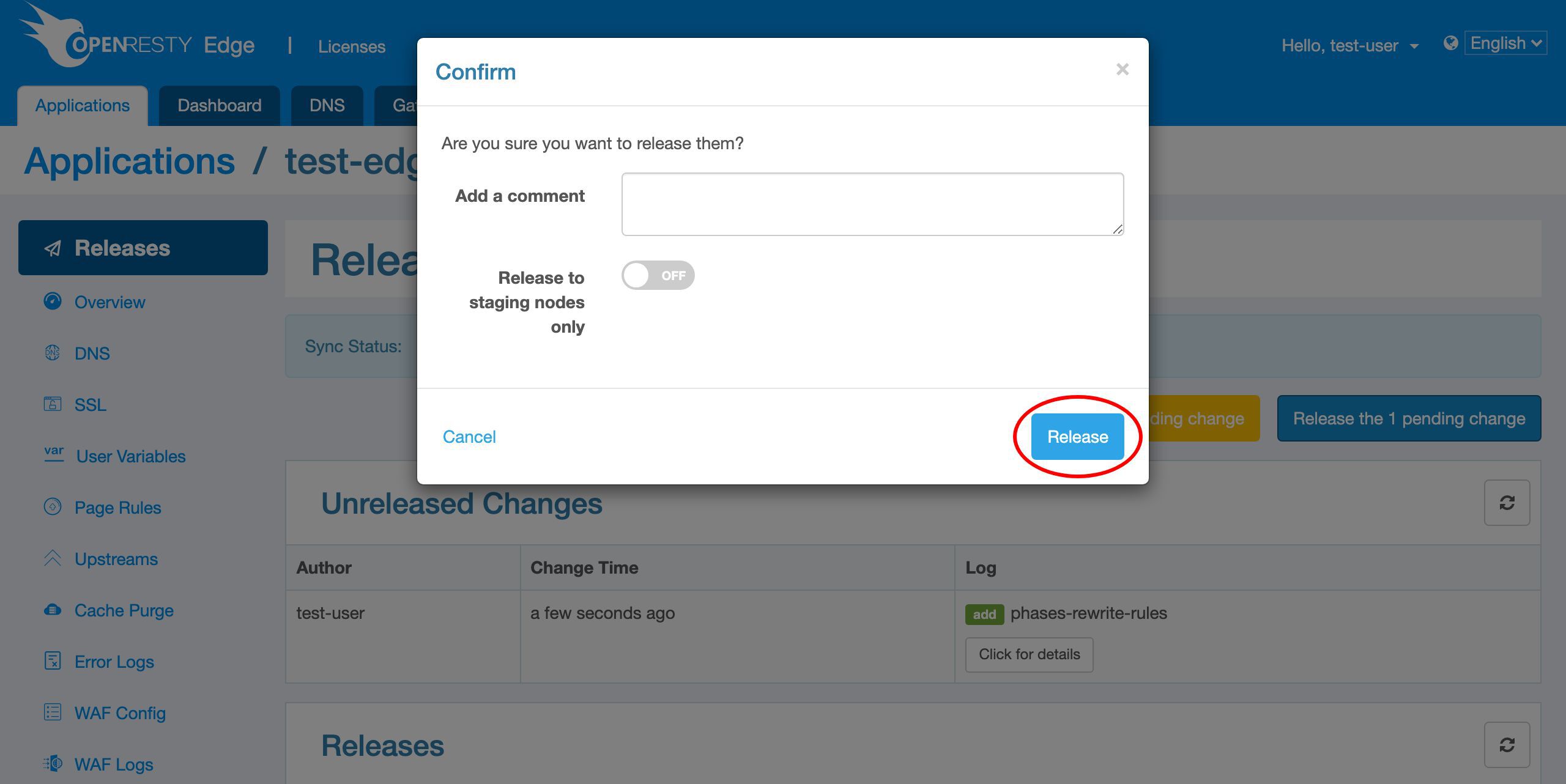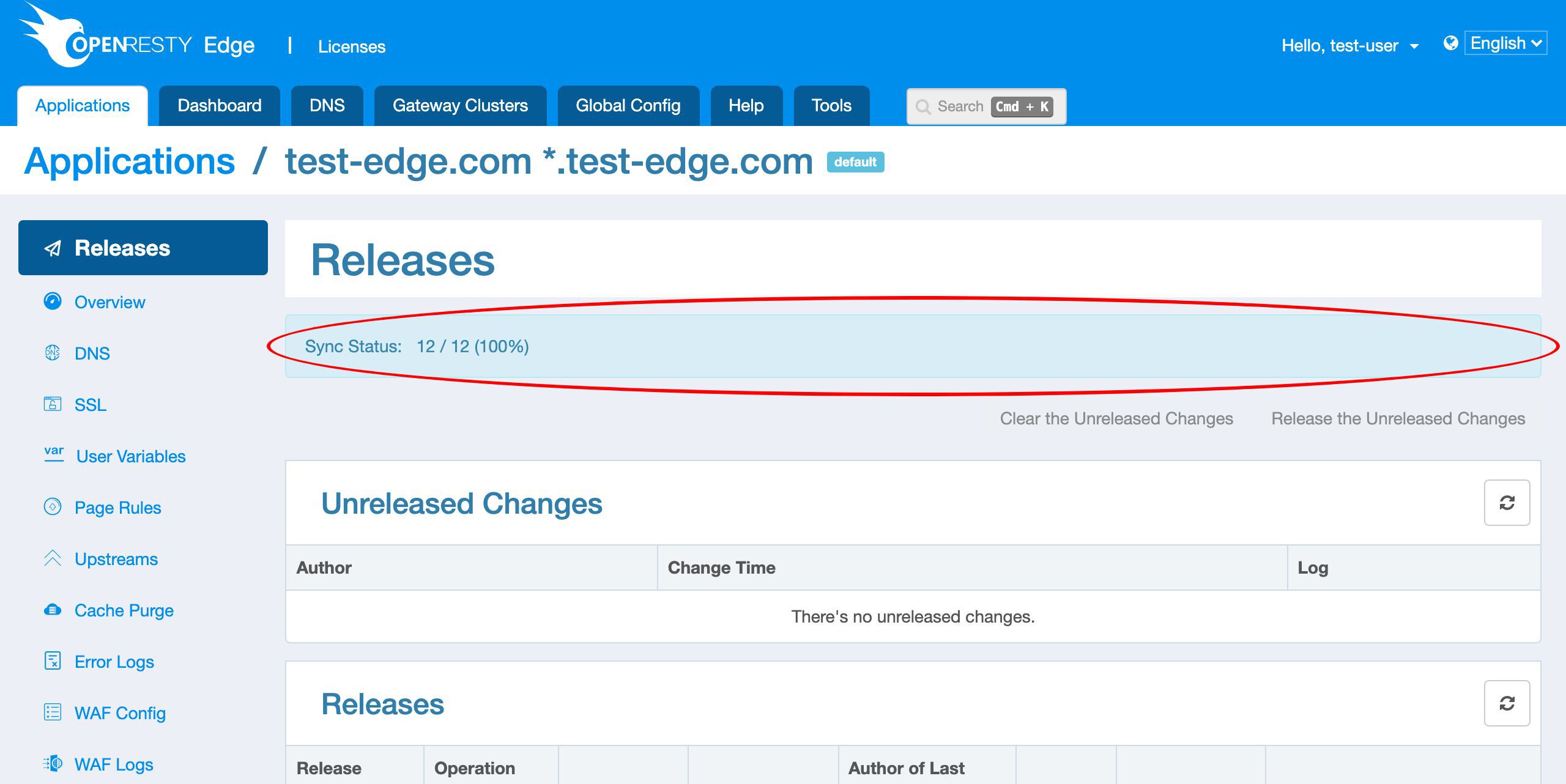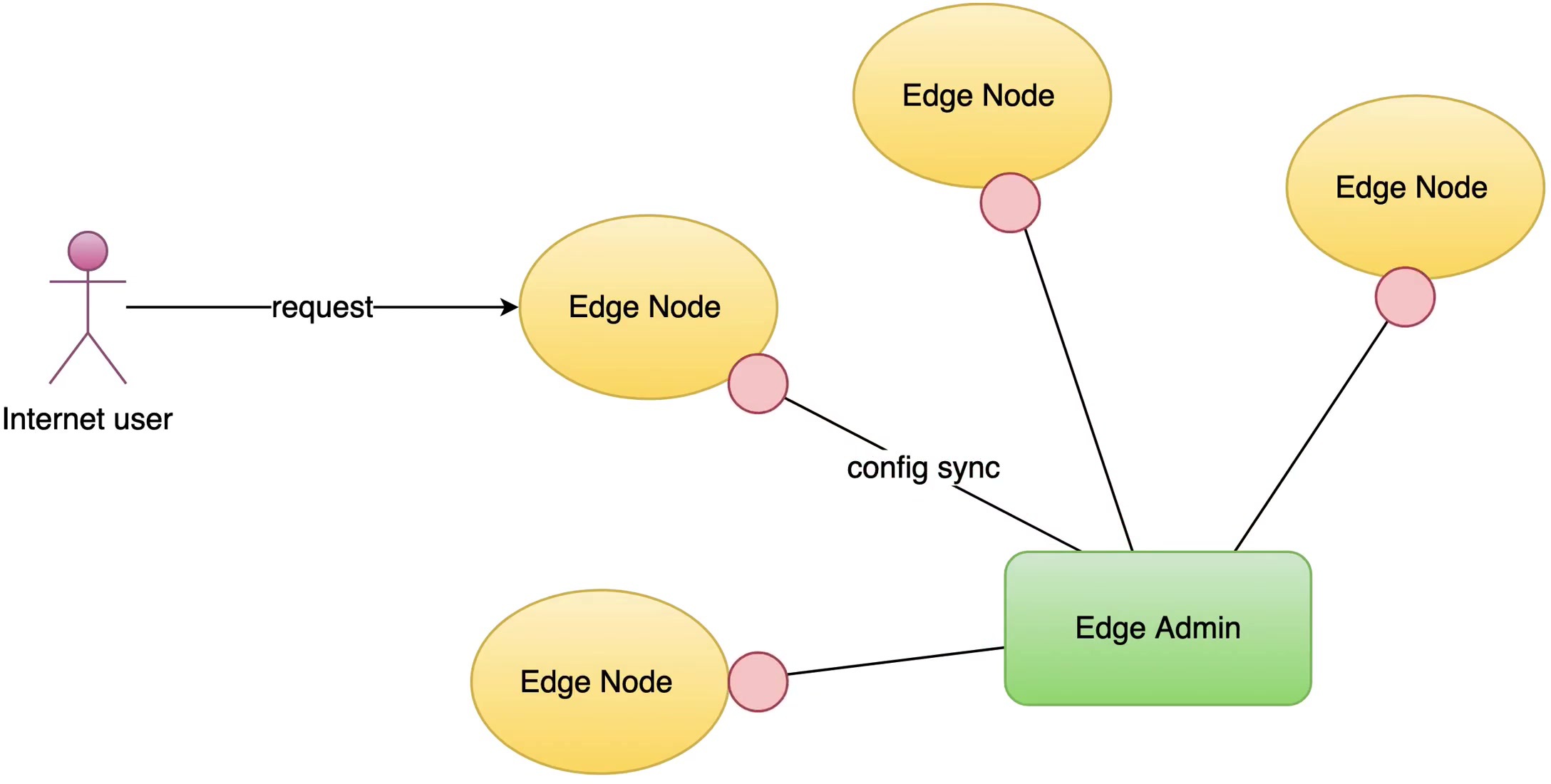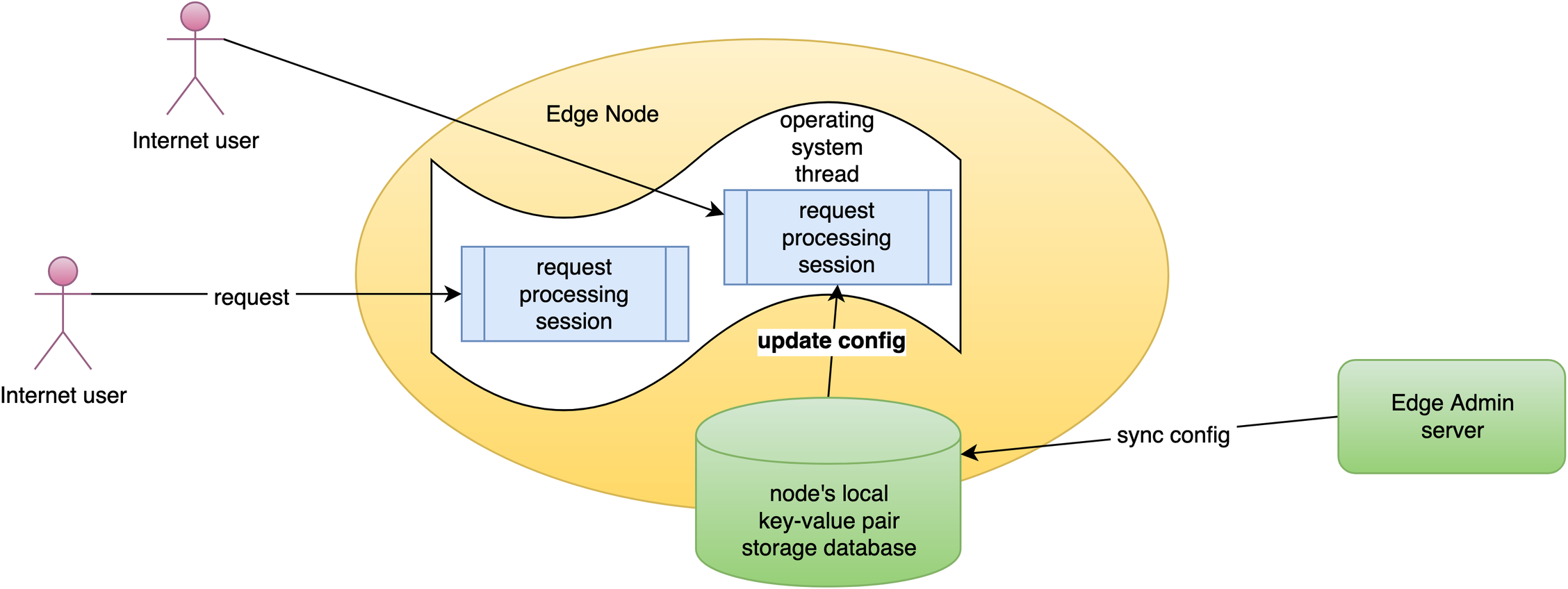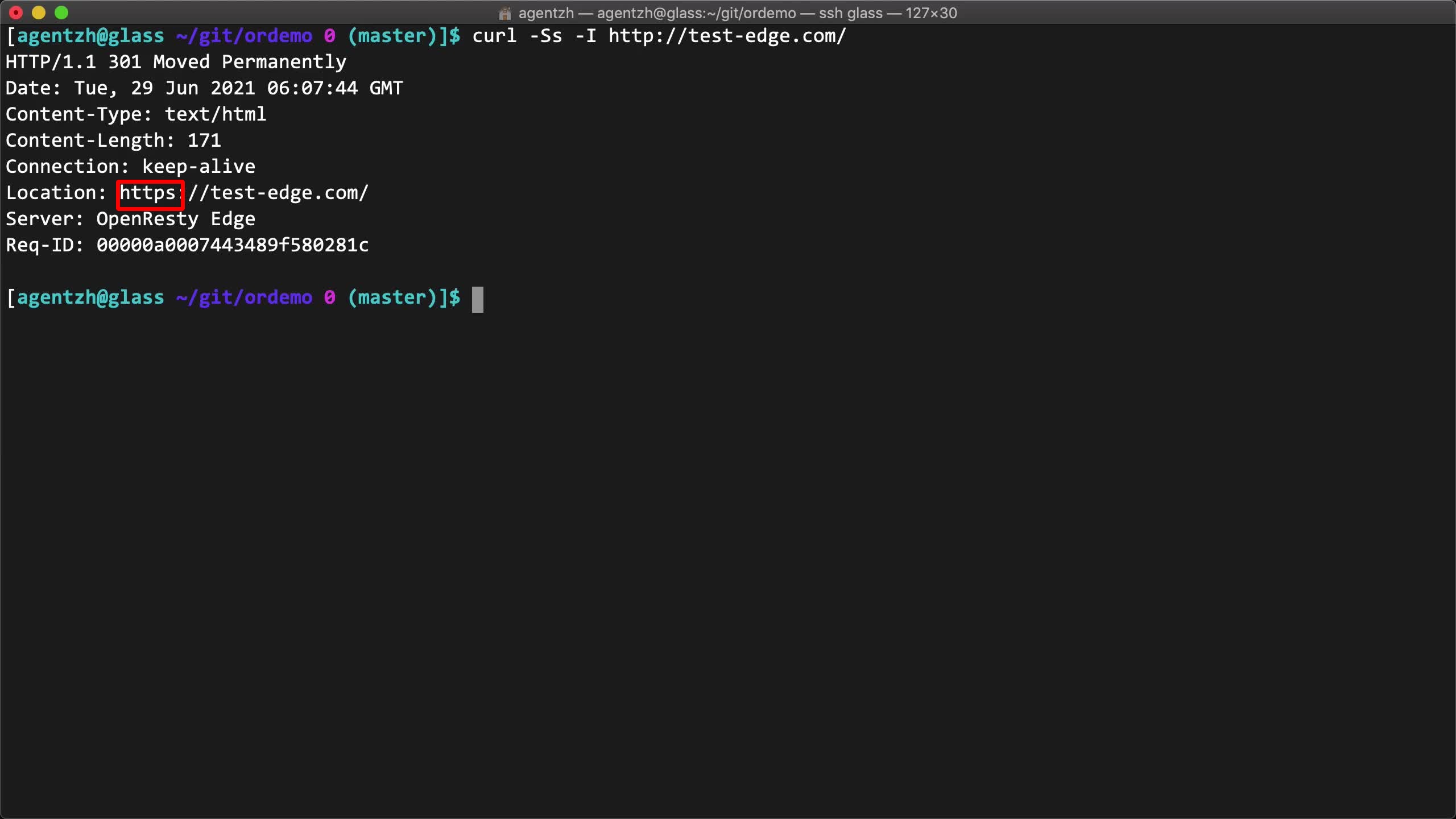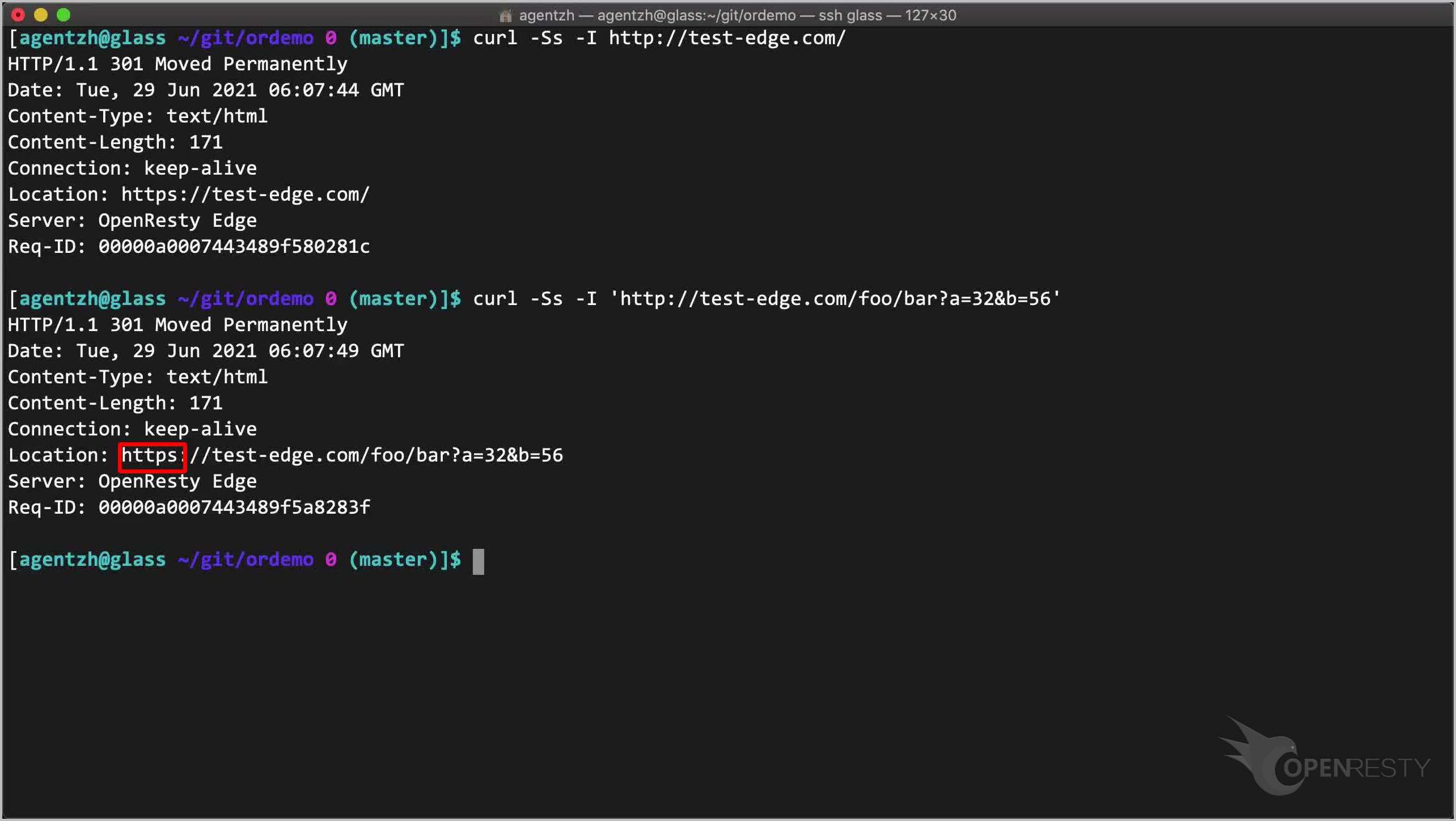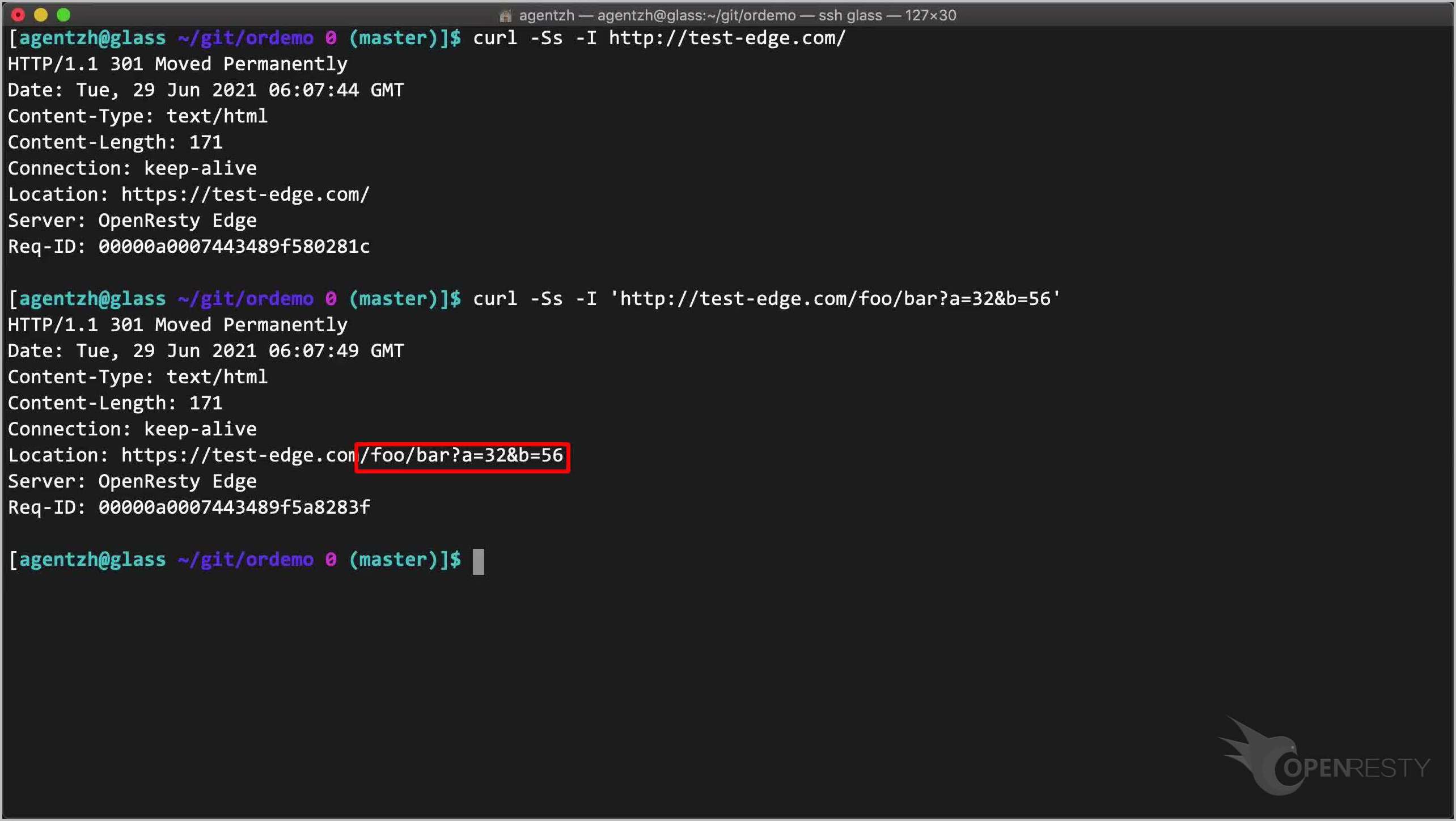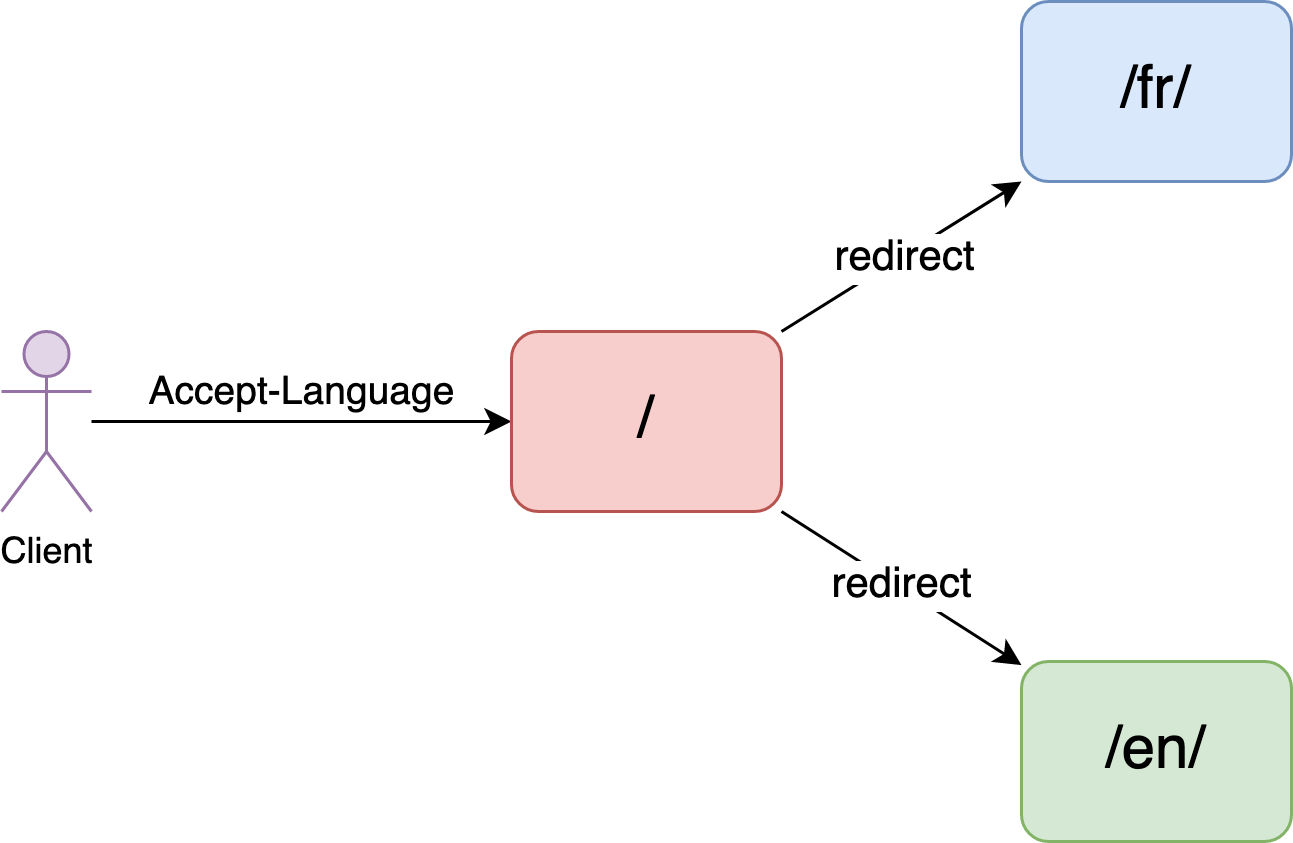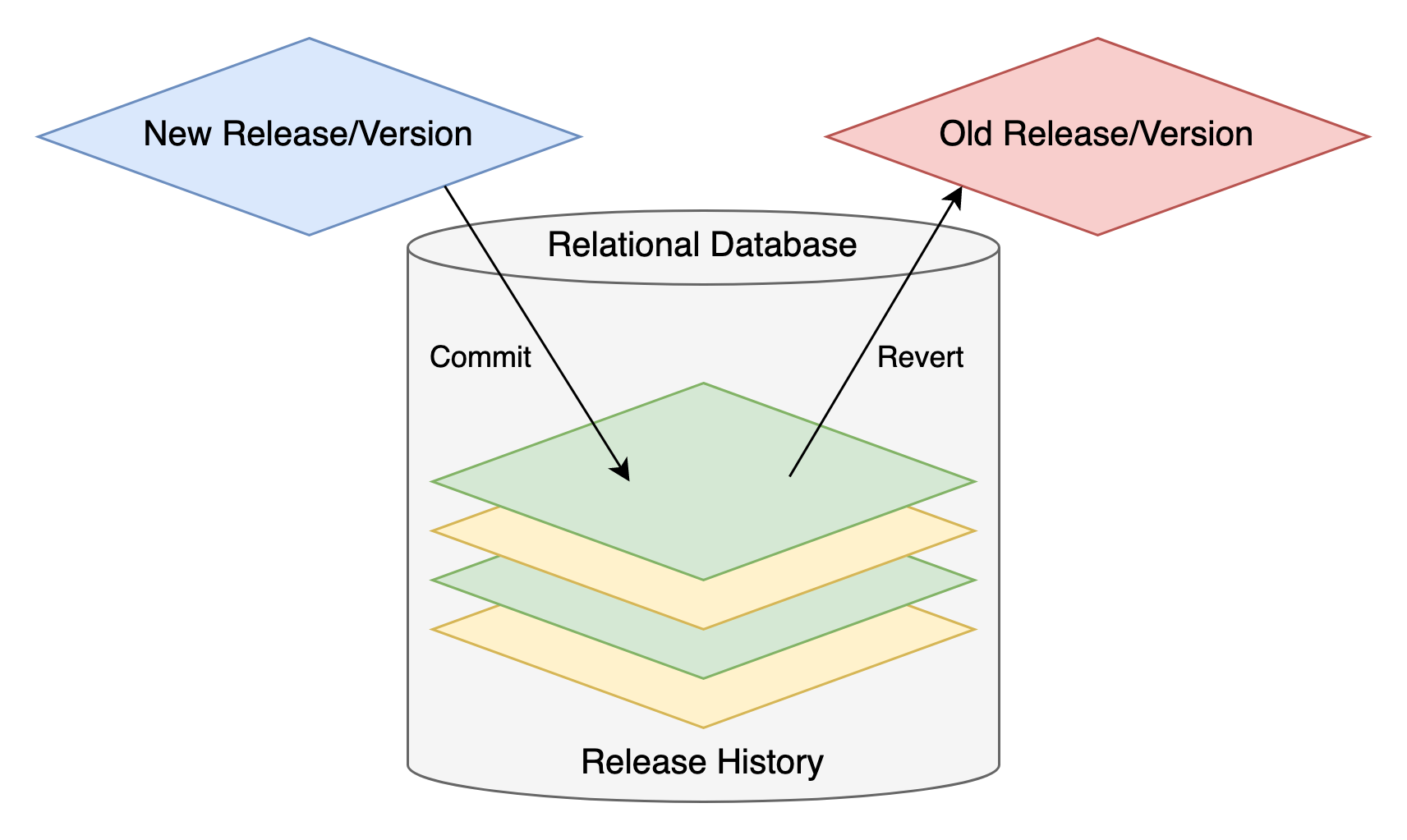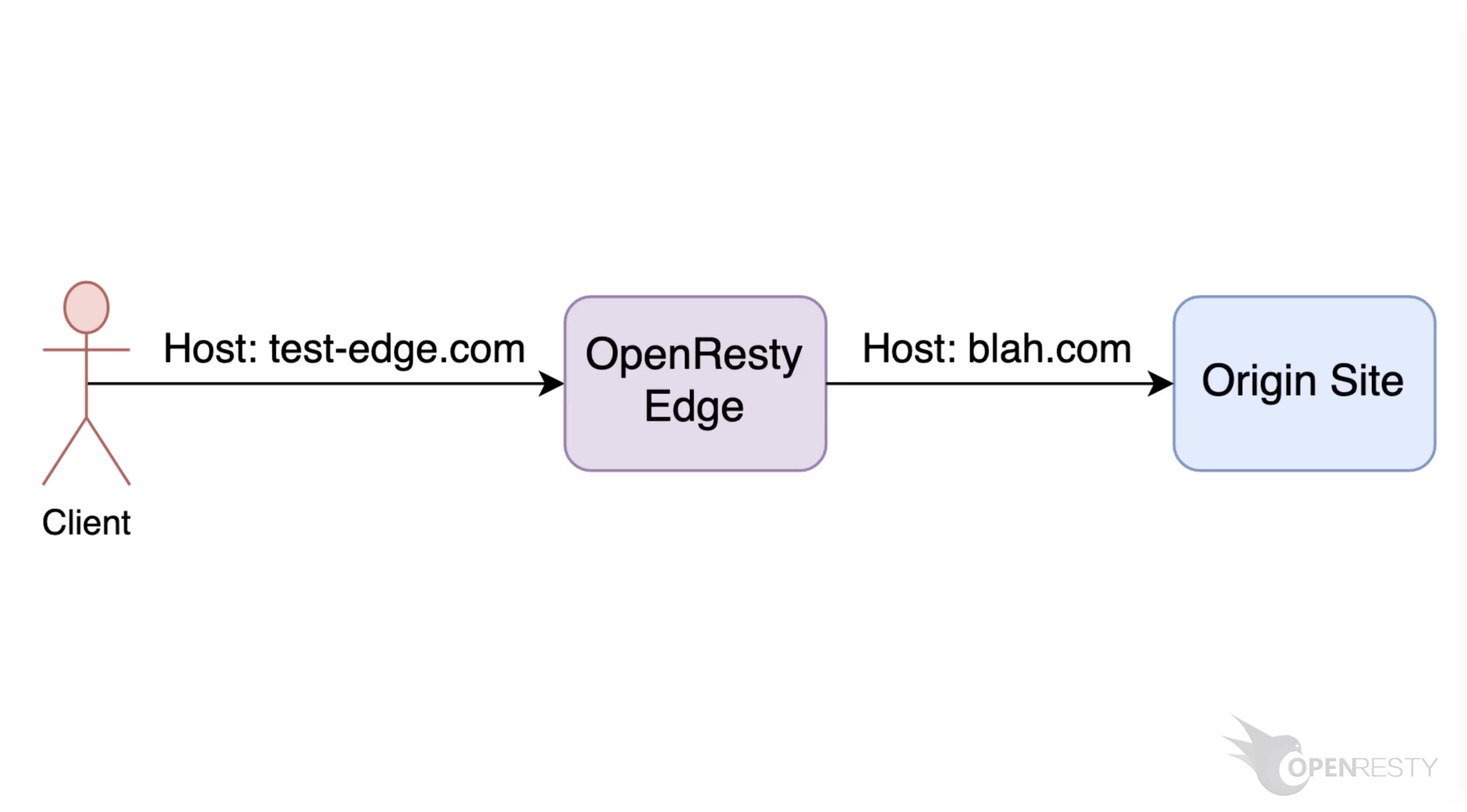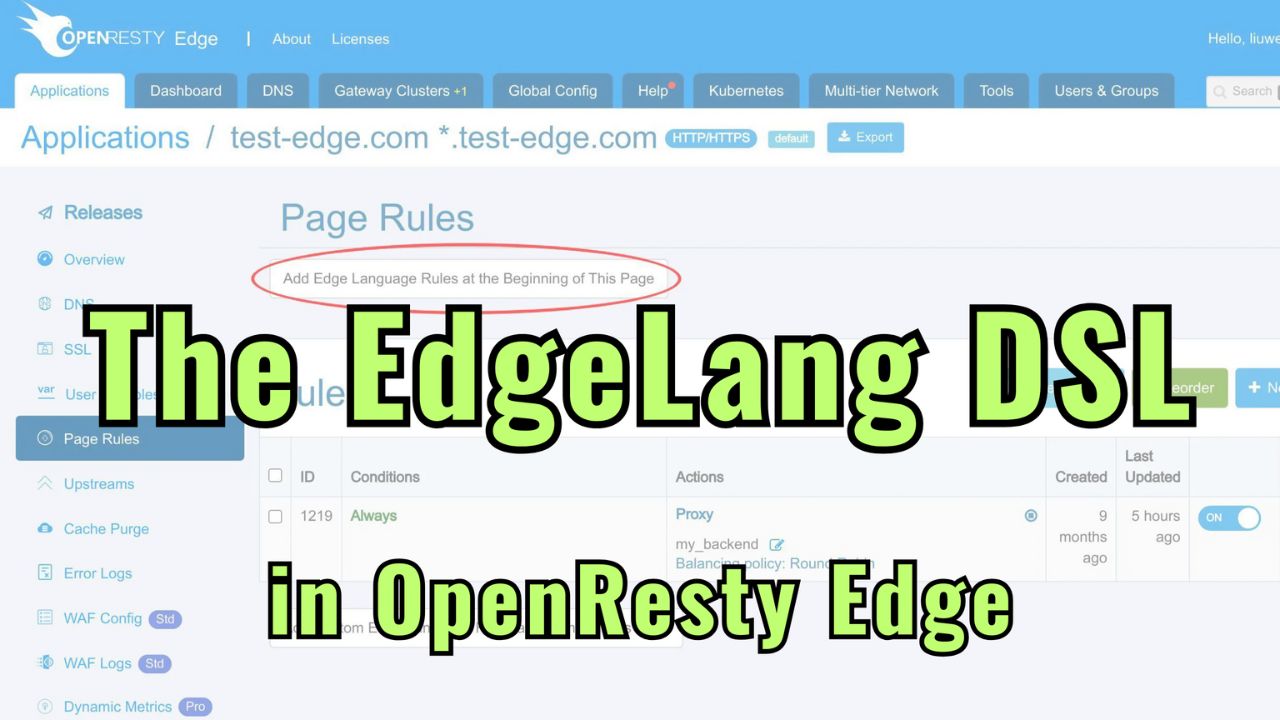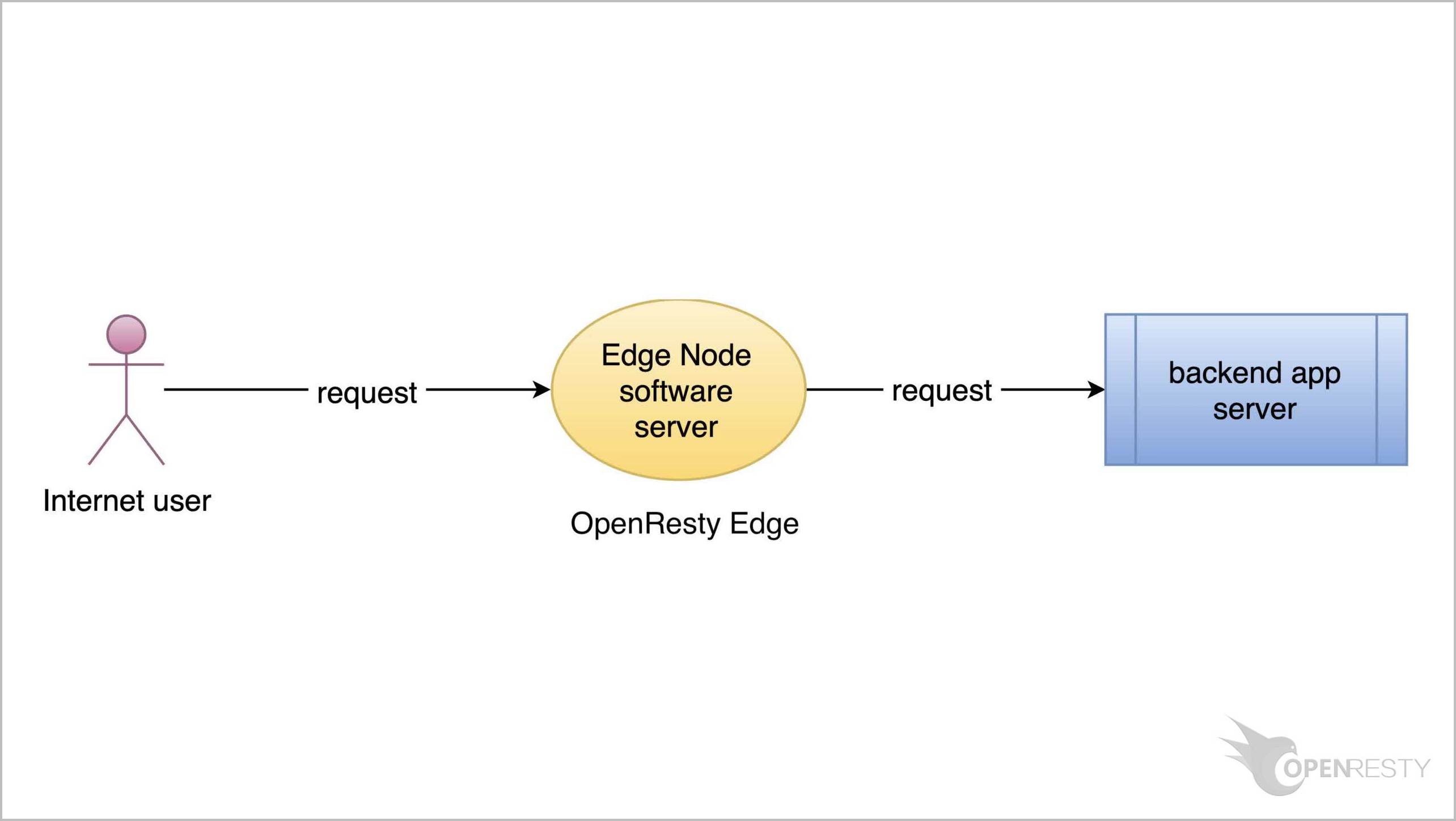Enforce the use of SSL in websites via OpenResty Edge
Today I’d like to show how to enforce the use of SSL on your sites. That is, redirecting all user HTTP requests to their HTTPS counterparts.
Create the page rules to redirect HTTP requests
As always, let’s go to the OpenResty Edge’s Admin web console. This is our sample deployment of the console. Every user has her own local deployment.
This time we use our continuing sample application for the test-edge.com domain.
Let’s enter this application.
Let’s go to the page rules.
Create a new page rule.
We enable a rule condition for all HTTP requests.
Let’s see all the variables we can choose from.
We select Scheme.
We keep the string equality operator intact.
We choose http as the value.
Then for the action part of the rule, we can configure a 301 redirect action.
We have a lot of actions here.
So better search for the Redirect action.
Select it.
We keep the current request URI intact.
And we also inherit the current request’s URI arguments or query string.
We need to change the request scheme of the new request though.
We select https.
We can select 301 redirect instead here.
It is the Moved Permanently redirect type.
We make sure this rule runs before any existing normal rules.
Make sure we skip any subsequent rules when this rule is matched.
It’s not really necessary for this rule. But it is always a good idea to be explicit when we want to immediately stop request processing.
Create this rule for real.
We can see our new page rule to redirect all HTTP requests to their HTTPS counterparts.
We need to make a new release to push out our new page rule, as always.
Click on this button.
Ship it!
It is fully synchronized.
Now the new page rule has been pushed to all the gateway clusters and servers.
Our configuration changes do NOT require server reload, restart, or binary upgrade. So it’s very efficient and scalable.
Test the page rule
Let’s open a new browser tab to access the test-edge.com site via HTTP.
We can see it indeed becomes HTTPS. Note the small lock icon in the browser address bar.
On the terminal, we can also test it out using curl.
curl -Ss -I http://test-edge.com/
It is indeed a 301 redirect to use the HTTPS protocol.
Let’s try a more complex URI and query string.
curl -Ss -I 'http://test-edge.com/foo/bar?a=32&b=56'
We can see it is still a redirect to HTTPS.
And the URI and query string are also carried on.
What is OpenResty Edge
OpenResty Edge is our all-in-one gateway software for microservices and distributed traffic architectures. It combines traffic management, private CDN construction, API gateway, security, and more to help you easily build, manage, and protect modern applications. OpenResty Edge delivers industry-leading performance and scalability to meet the demanding needs of high concurrency, high load scenarios. It supports scheduling containerized application traffic such as K8s and manages massive domains, making it easy to meet the needs of large websites and complex applications.
If you like this tutorial, please subscribe to this blog site and/or our YouTube channel. Thank you!
About The Author
Yichun Zhang (Github handle: agentzh), is the original creator of the OpenResty® open-source project and the CEO of OpenResty Inc..
Yichun is one of the earliest advocates and leaders of “open-source technology”. He worked at many internationally renowned tech companies, such as Cloudflare, Yahoo!. He is a pioneer of “edge computing”, “dynamic tracing” and “machine coding”, with over 22 years of programming and 16 years of open source experience. Yichun is well-known in the open-source space as the project leader of OpenResty®, adopted by more than 40 million global website domains.
OpenResty Inc., the enterprise software start-up founded by Yichun in 2017, has customers from some of the biggest companies in the world. Its flagship product, OpenResty XRay, is a non-invasive profiling and troubleshooting tool that significantly enhances and utilizes dynamic tracing technology. And its OpenResty Edge product is a powerful distributed traffic management and private CDN software product.
As an avid open-source contributor, Yichun has contributed more than a million lines of code to numerous open-source projects, including Linux kernel, Nginx, LuaJIT, GDB, SystemTap, LLVM, Perl, etc. He has also authored more than 60 open-source software libraries.


